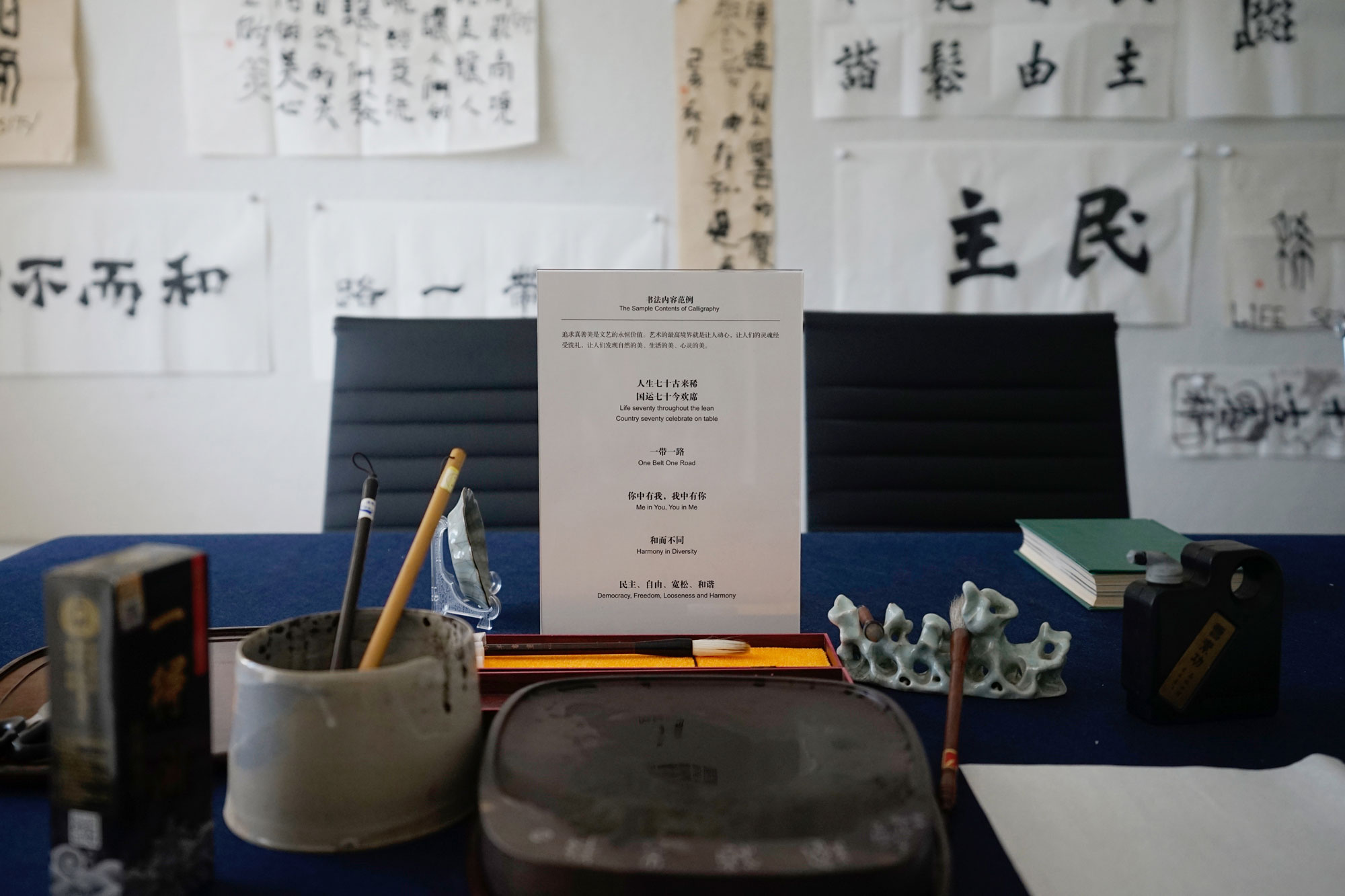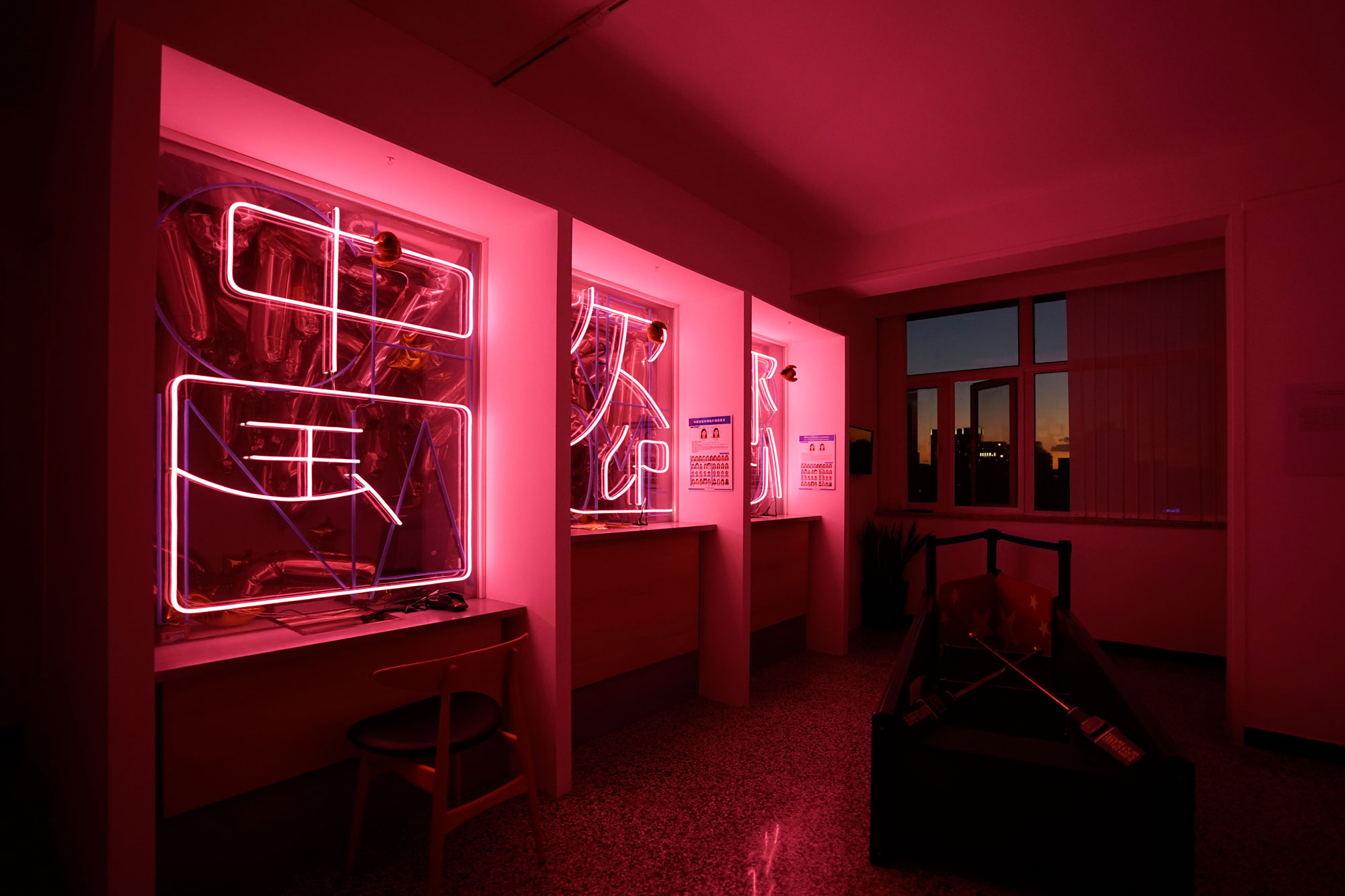In the afternoon of August 26, 2019, the Artist Guo Hongwei’s solo project Happy Hours opened in DRC No.12. Guo Hongwei transformed the visual and conceptual remnants of the previous project into the foundation for this project, and continued to draw, as it were, a concrete image on this “realistic background-color”. Posed as a fictitious head of the office, the artist not only helped the office to complete the primary selection of Theme Logo Design Competition for the 70th National Day Celebration, recommended the celebrity-blog posts from the C.P. Sisters, but also helped to invite a (fictitious) curator to co-organize the special exhibition Happy Hours as part of the National Day celebration. (In the previous project Applause Is Due, the artist Liu Xinyi built a Chinese consulate office in the apartment, which Guo Hongwei physically as well as conceptually based his work on.)
In this special exhibition, six (fictitious) Chinese artists, through appropriating some classic works from Western art history, experimented with unique ways of creating works with “Chinese characteristics”, whereas four (fictitious) foreign artists/groups “extracted nutrients” from Chinese culture and drew inspiration from the Chinese reality.
In the Visa service area, Qin Riji improvised the work Barca Nostra using a security gate and the seats removed from the waiting room. Adjacent to the designs from the first-round winners of the Theme Logo Design Competition is Shen Yinlong's “slogan” work, Six Exhortations, displayed on the wall. Cai Ji’s neon tubes installation, “You”, “Yo” ,“U”, flashes on the visa reception windows; Jia Xiaoguang replaced the mini decorative lanterns with moon-shaped croissants; behind the neon lights, Wang Yi filled the visa office with balloons in the shapes of 7 and 0, compelling one to imagine a joyful scene in which consulate staff are working in the balloon-filled office, a festival atmosphere symbolizing the national celebration.
Moving to the consular services area, Zhao Kezhi’s synchronous clocks are installed above the door. A huge red lantern, embedded on the wall dividing the consular services area, is the work from the Ethiopian artist Lagu Adejumoby, Untitled (or A Dream). This dream may be red and shiny, but the rough patches between the wall and the lantern expose the raw edges between the “dream” and “reality”. Next to the lantern is a passport vending machine by PNSK from Slovenia, selling passports of different countries that have already been issued with permanent visa-free entry permits for China. Whether China will become the first socialist global stateless country is a question that the artist collective is very interested in.
In the conference room, the Islamic calligrapher Shirin Majidi from Iran held a calligraphy workshop, whose inspirations originated from her comparative study of Chinese, English and Islamic calligraphy. The Indian painter Nayan Shyam’s work is also displayed in the same room; unable to suppress his fondness towards pandas, he depicted, with uniquely Indian curved strokes, the panda mother and son that had just been returned from the United States, as his response to the theme of the celebration.
The special exhibition Happy Hours “successfully highlights the inclusiveness and internationalization of Chinese art. It not only internalizes the Western conceptual art into catalysts for the cultural prosperity and national revival of China, but also absorbs rich cultures into the Chinese mainstream values”.
Guo Hongwei, in a parodical fashion, combines the spatial attribute of the consulate office from the previous project with the temporal attribute of the coming 70th anniversary of the National Day, to “add this project to the upcoming national gesamtkunstwerk, in the meanwhile, taking this opportunity to explore the ways in which macro-values take root and creative methodologies are always thematically prioritized”.
*The artists and their experiences in the exhibition are fictional.
2019年8月26日下午,艺术家郭鸿蔚的个人项目《欢庆时间》在外交公寓12号空间开幕。郭鸿蔚将上一个项目萦余在空间中的概念和印象转变为工作的基底,并在这样的现实底色上继续勾勒出具体形象:他不仅帮助办事处完成了“庆国庆七十周年主题标识设计比赛”的初选工作,推荐了领保姐姐的网红帖,还帮助他们邀请策划人,一同为办事处呈现了庆祝国庆的特别展览《欢庆时间》。
在特别展览中,六位华人艺术家通过挪用西方艺术的一些经典作品案例的形式进行别具中国特色的创作,四位(组)外国艺术家则从中国现实中所吸收养分并转化为灵感。在签证服务区内,秦日吉将安检门和从公共座椅上拆下的椅座即兴组成了《我们的船》。墙上除了张贴了标志设计比赛的入选稿件,还有沈银龙的标语设计《六句箴言》。 蔡机的霓虹灯装置在签证窗口上不停的闪烁着“您”、“你”、“尔”的称谓变化,甲晓光将饰品小灯笼变作了形似月亮的牛角包,而王毅将7和0的数字气球充满了霓虹灯背后的玻璃隔间——这不禁让人想像在寓意70华诞的气球之中办公的欢乐场景。移步领事侨务区,门楣上正是赵客至的同步时钟,而在侨务区的窗口上镶嵌了一个巨大的红灯笼,这是埃塞俄比亚艺术家剌古·阿德朱莫比的作品《无题(或梦)》。这个梦红艳照人,但是夹在梦和现实间的毛边上却布满了补丁。灯笼旁是来自斯洛文尼亚的PNSK小组的护照自动量贩机,里面的各地护照都已贴好永久免签的中国签证。“中国会成为第一个社会主义全球性国家吗?”他们对这个问题非常感兴趣。来自伊朗的伊斯兰书法家施林·马基迪在会议室里开办了书法工作坊,这源自她对中国书法、英文书法与伊斯兰书法间的比较研究。印度画家纳扬·希亚姆的作品也在会议室中,他无法按捺对于熊猫的喜爱,以印度人特有的优美弧线描绘了刚从美国送回的熊猫母子,以此回应国庆的主题。《欢庆时间》成功的凸显了中国艺术的包容性和国际化,不仅将西方观念艺术成功的内化为文化繁荣和民族复兴的催化剂,还将更多他国优秀文化吸纳到主流价值中。
郭鸿蔚结合了外交公寓即有的空间属性(之前项目呈现的官方办事处)和将有的时间属性(七十周年国庆),将这个项目加入到即将来临的全国性总体艺术作品中,并借此讨论宏观价值的着床方式和主题先行的创作方法。展览中的艺术家及其经历均为虚构。
WORKS
OPENING SCENE
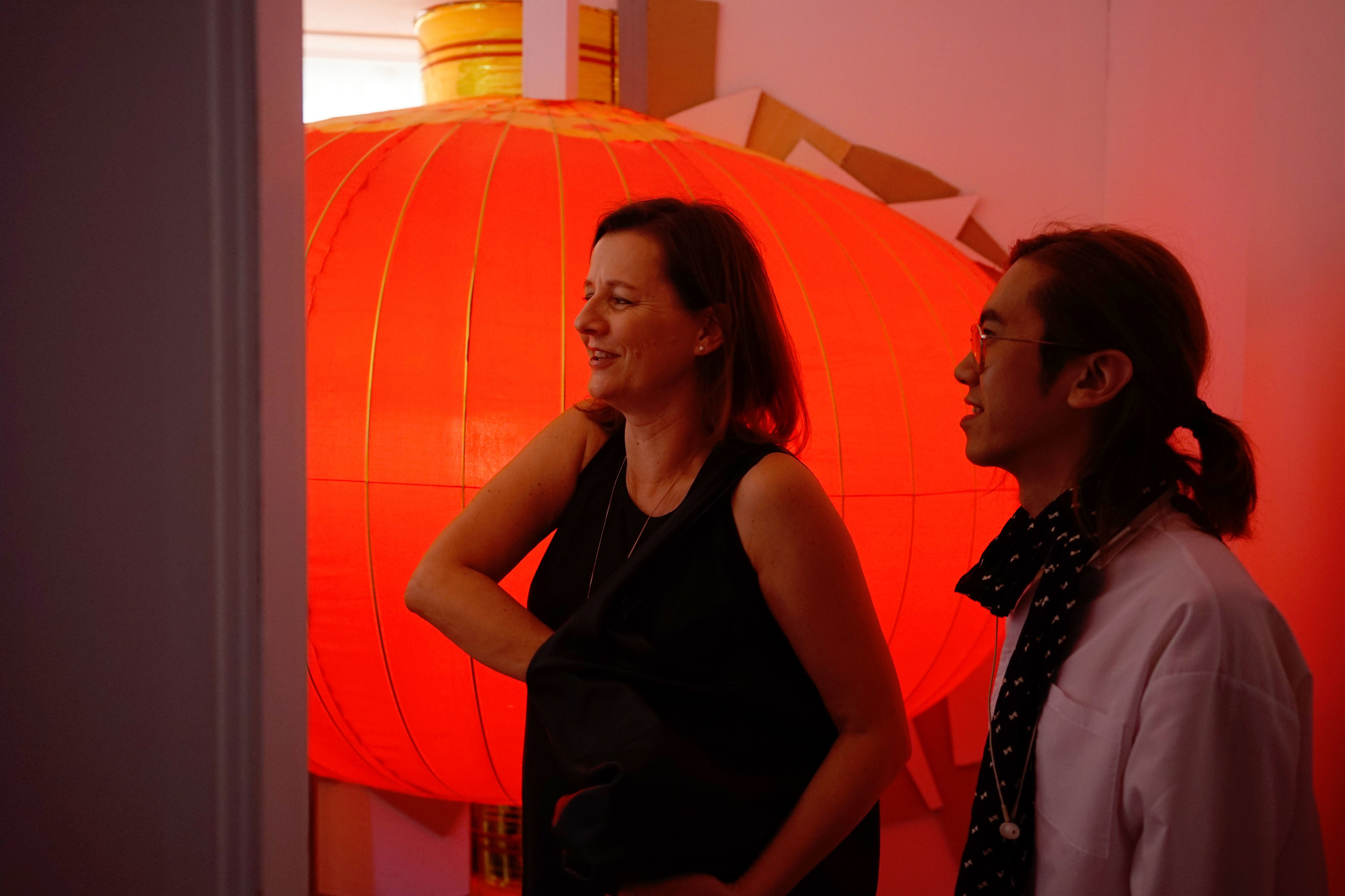
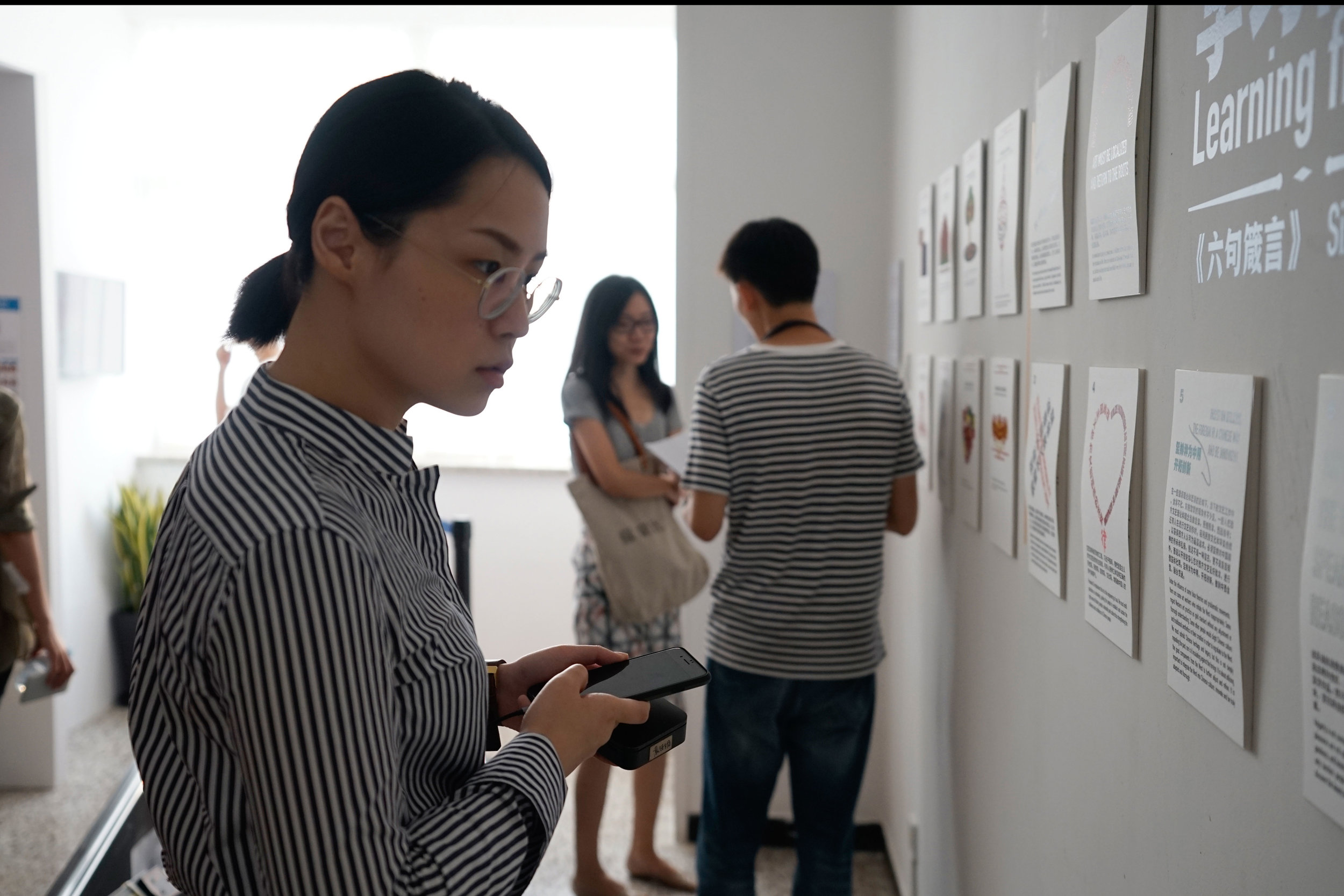
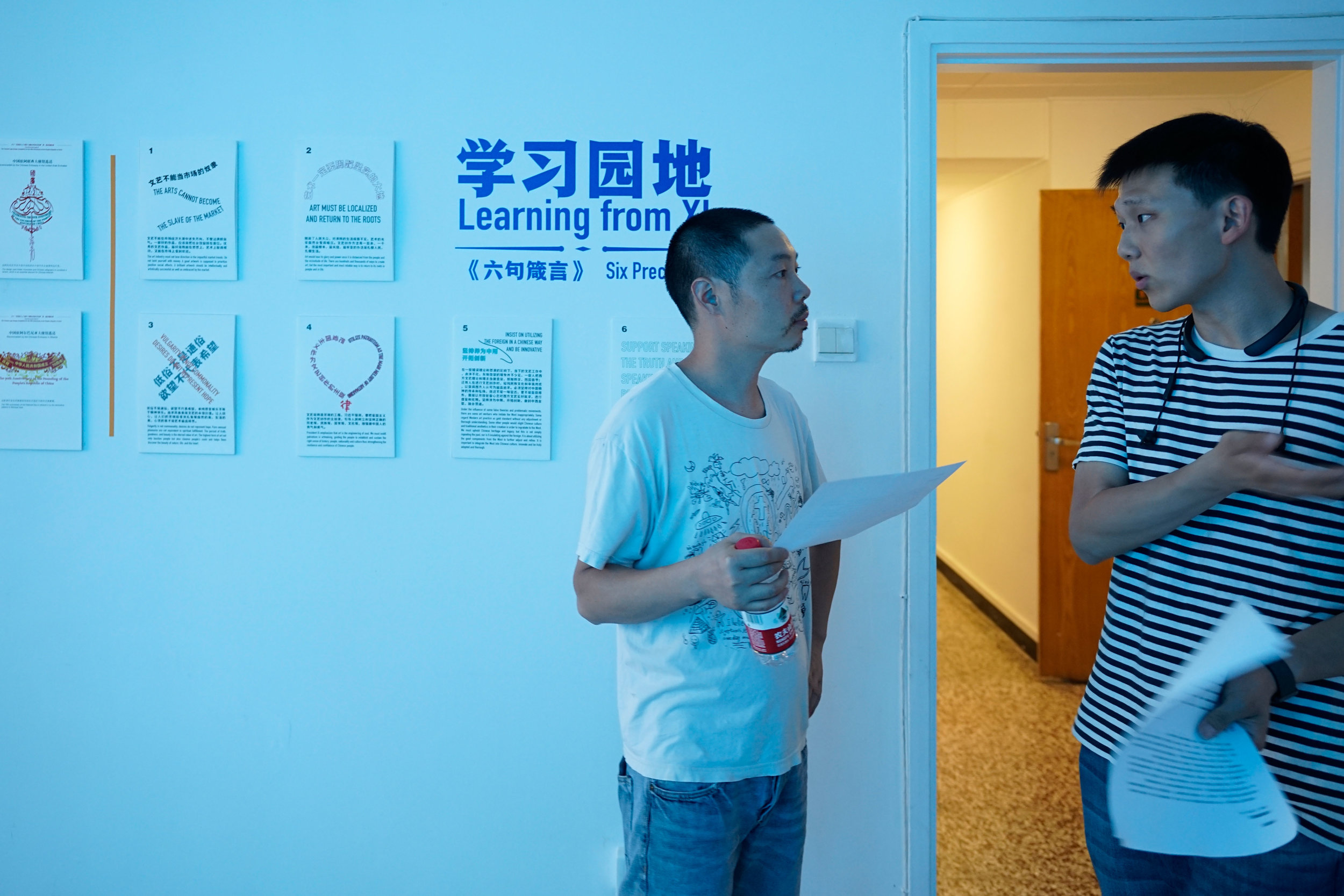

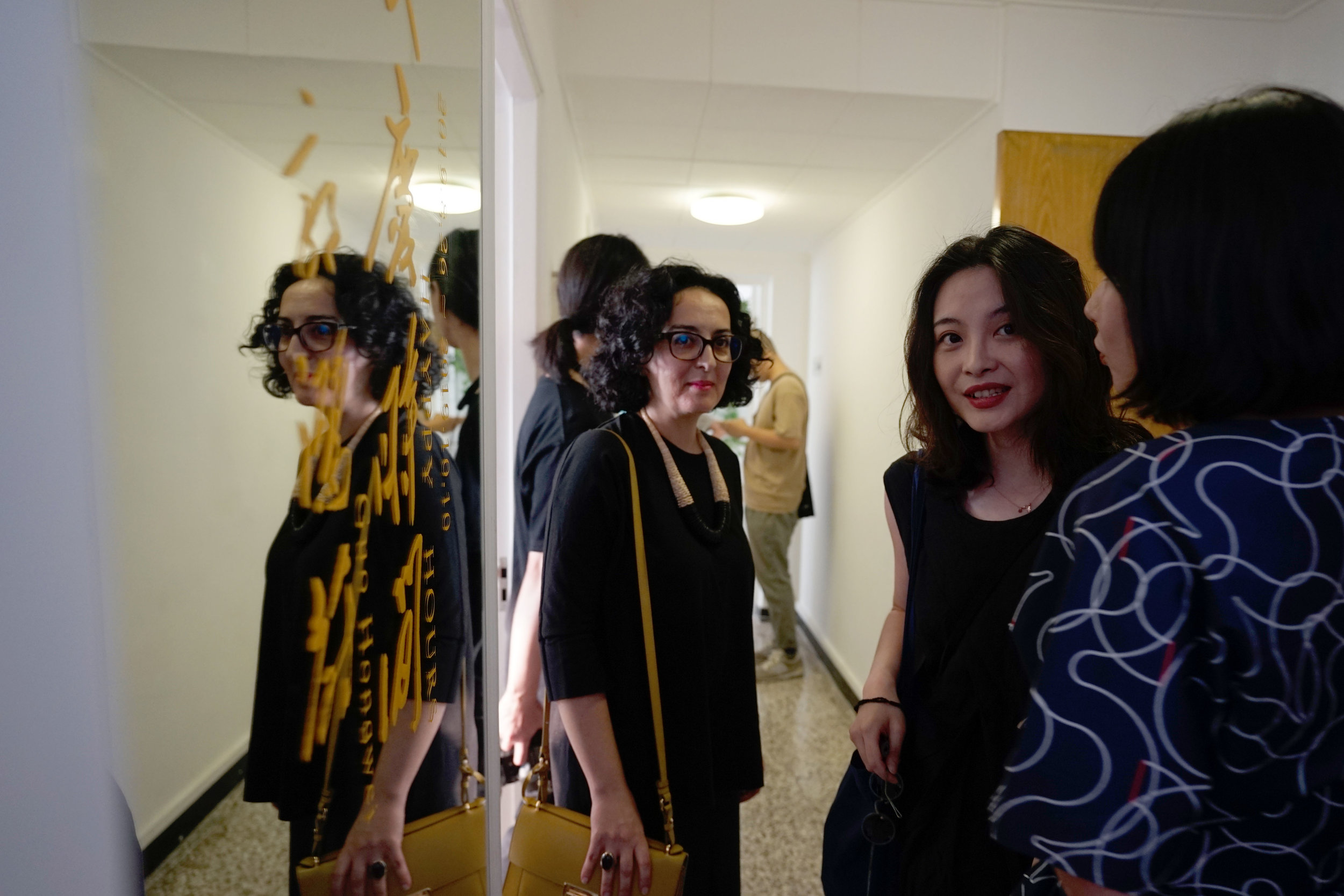
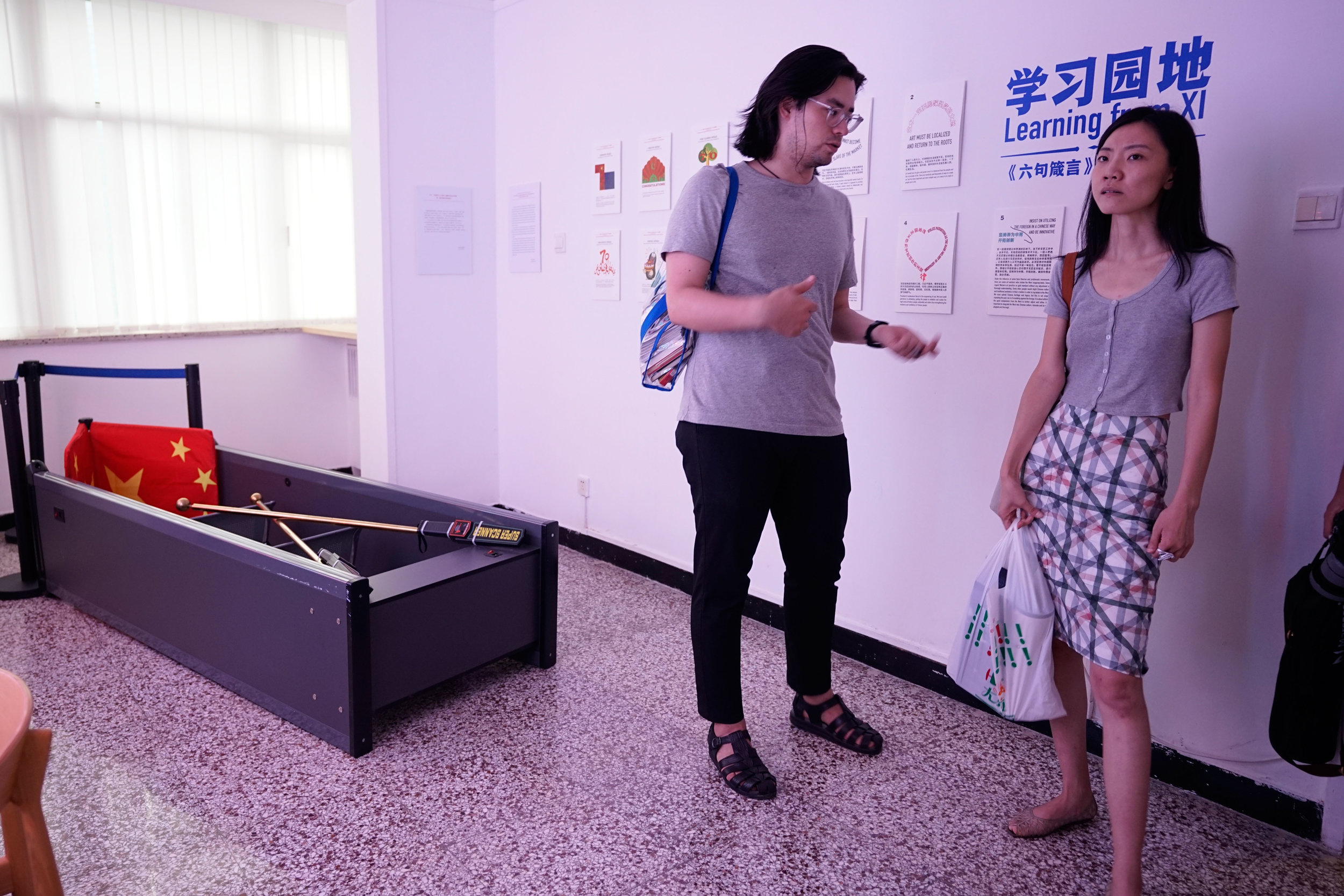
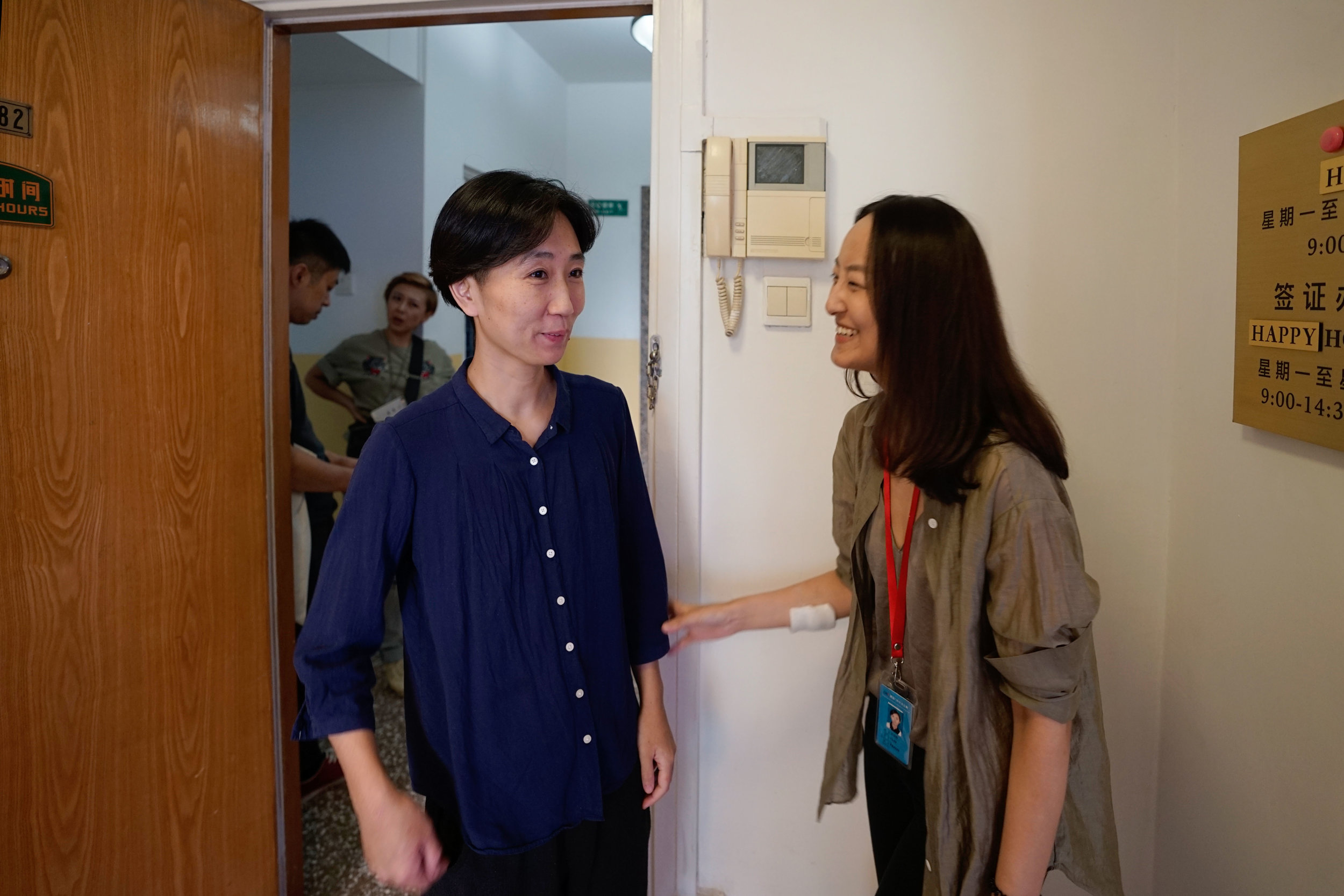
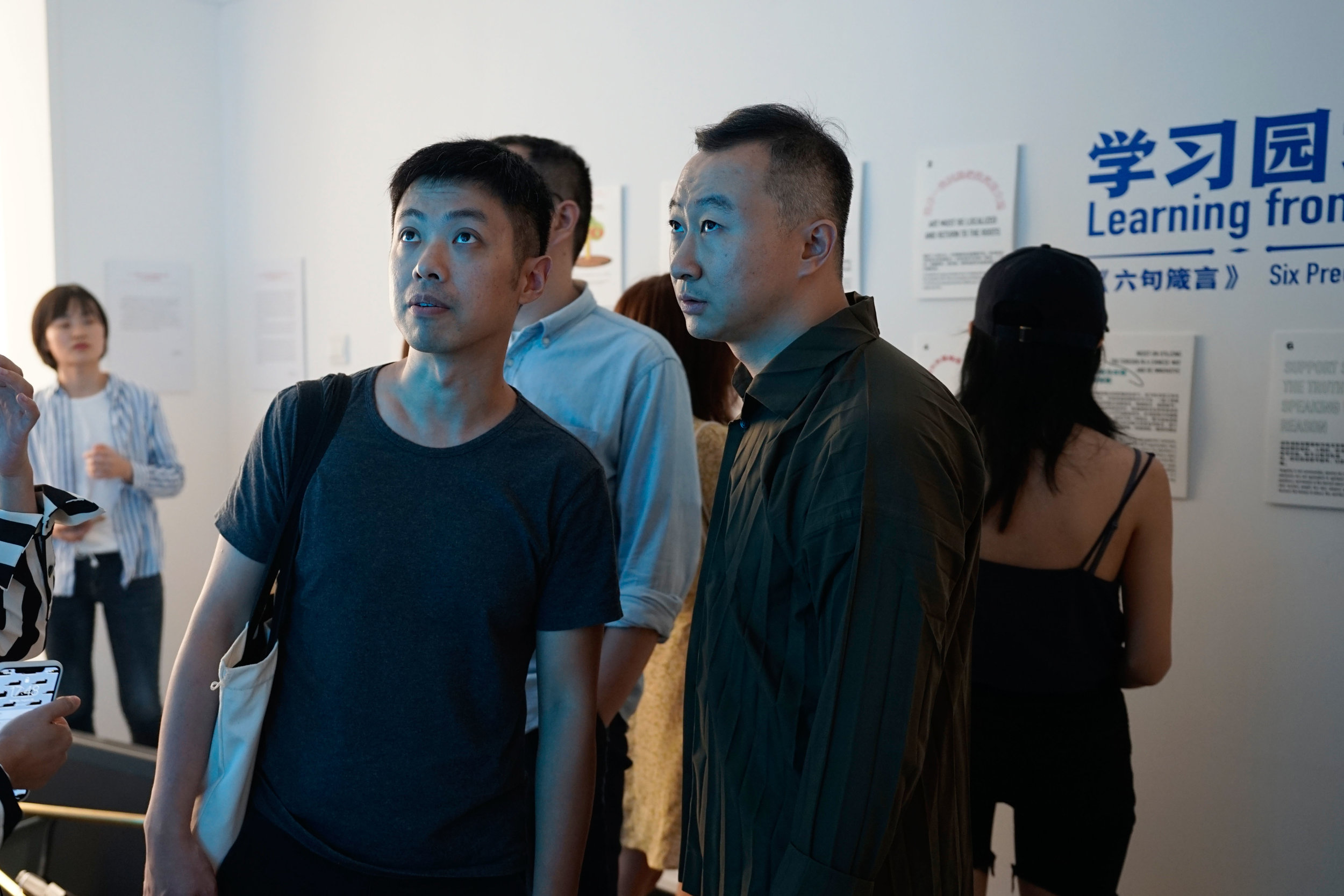
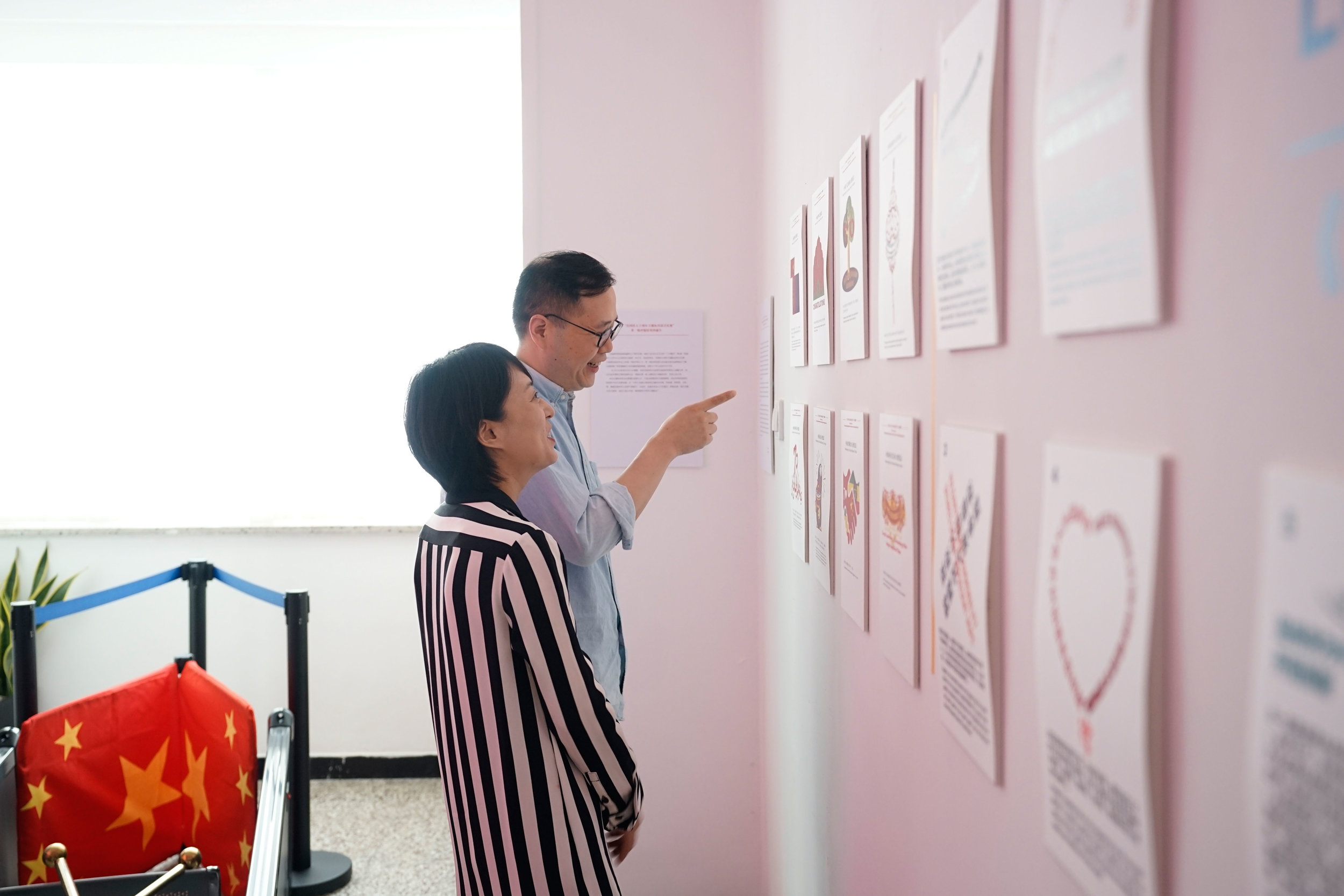
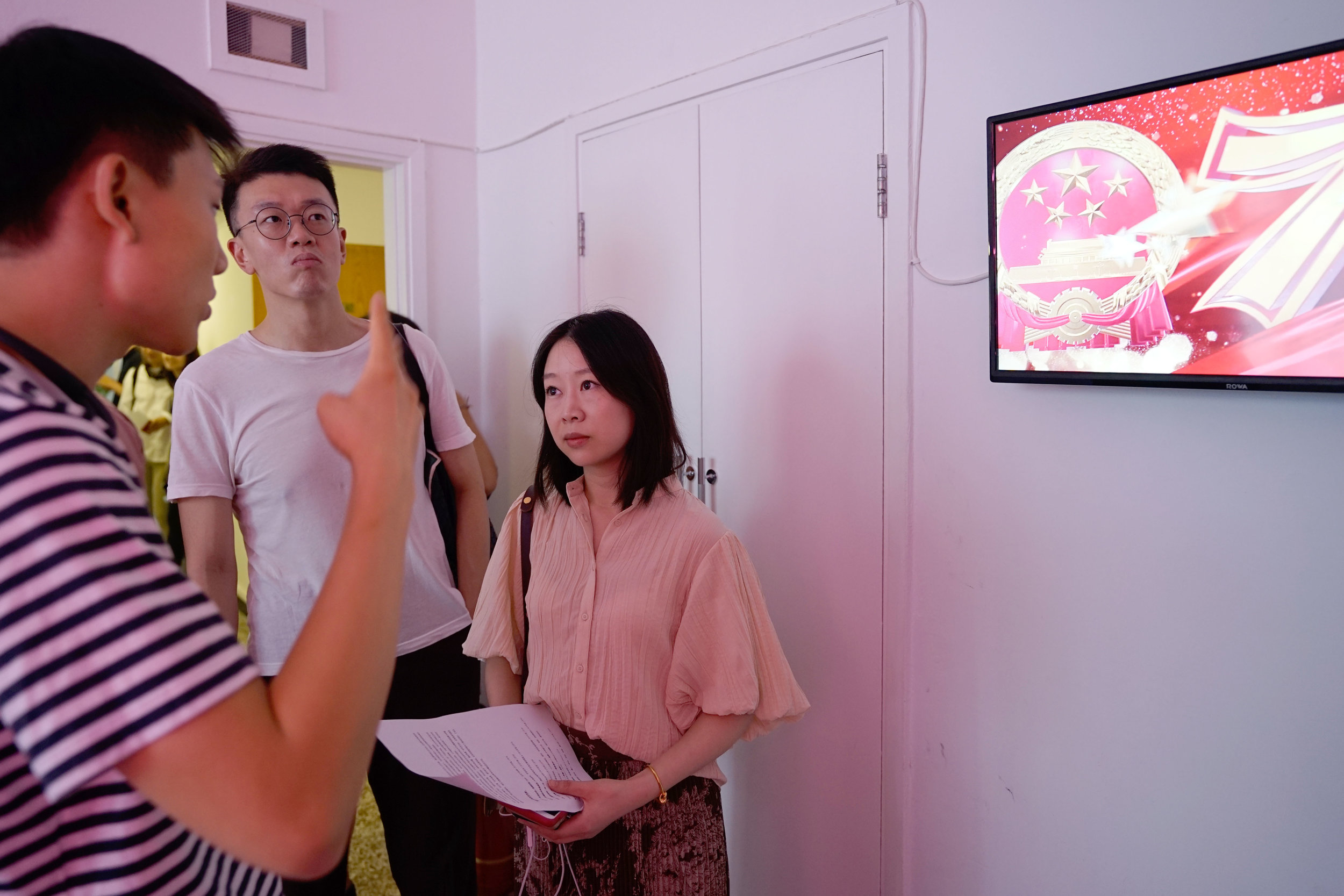
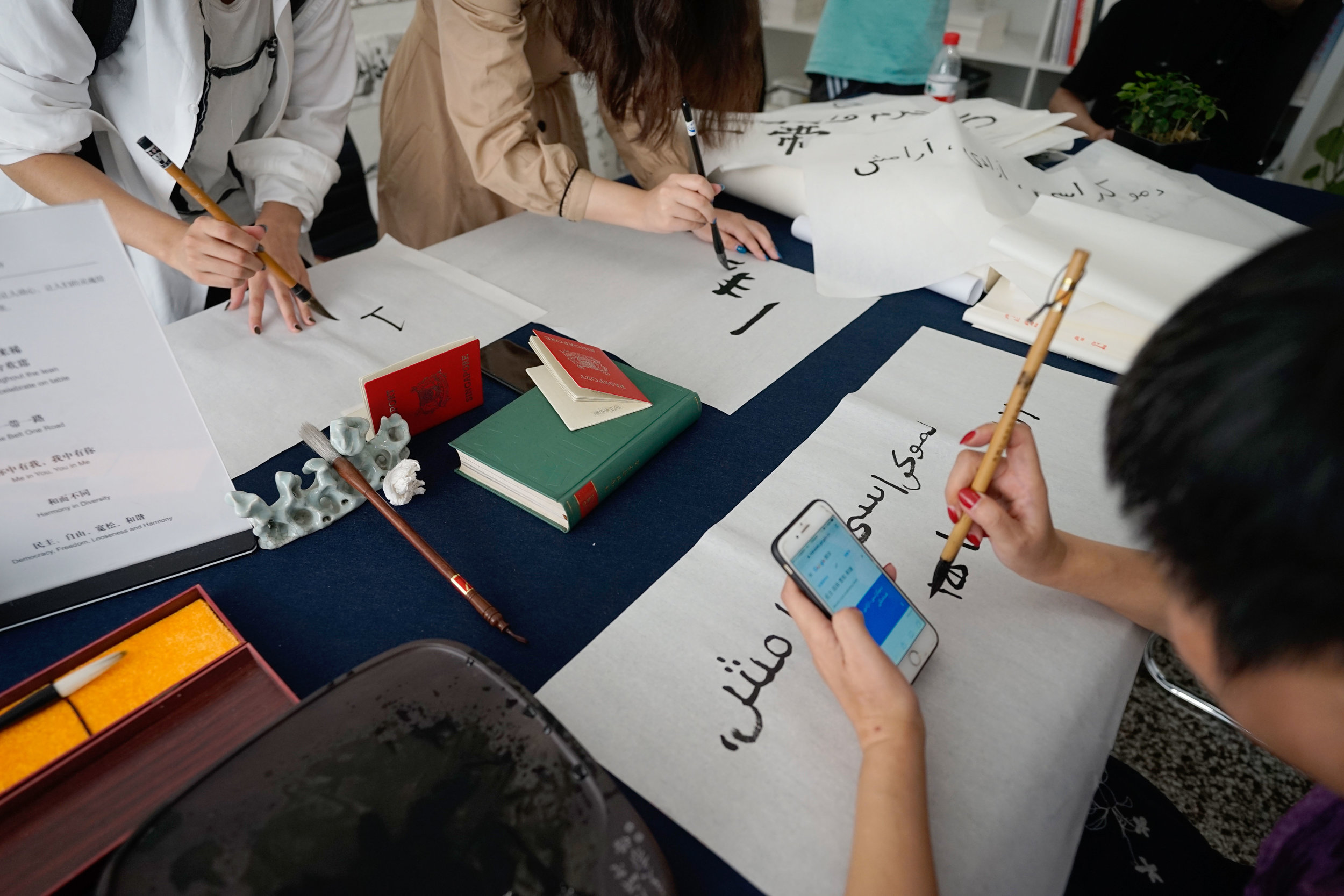
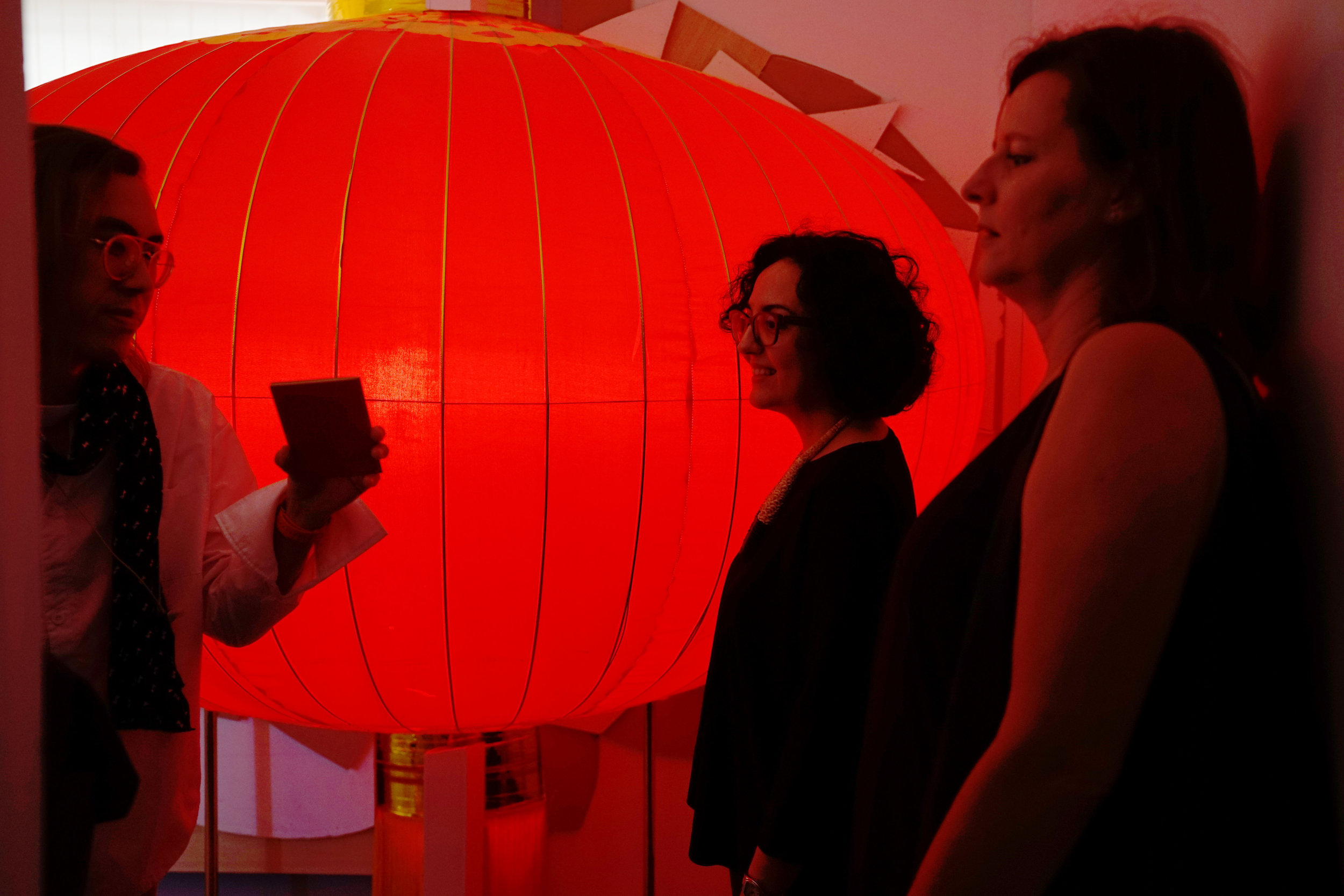
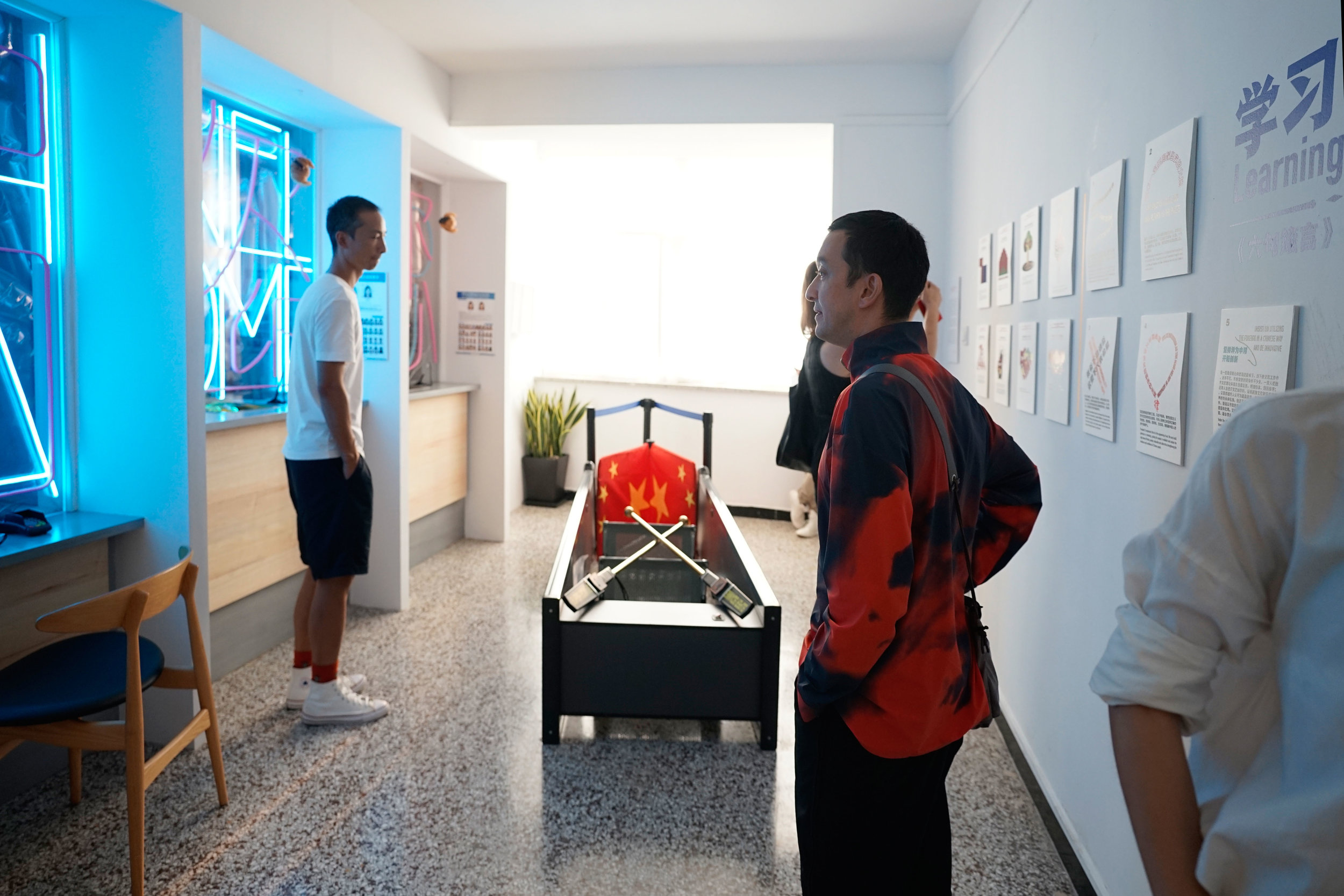
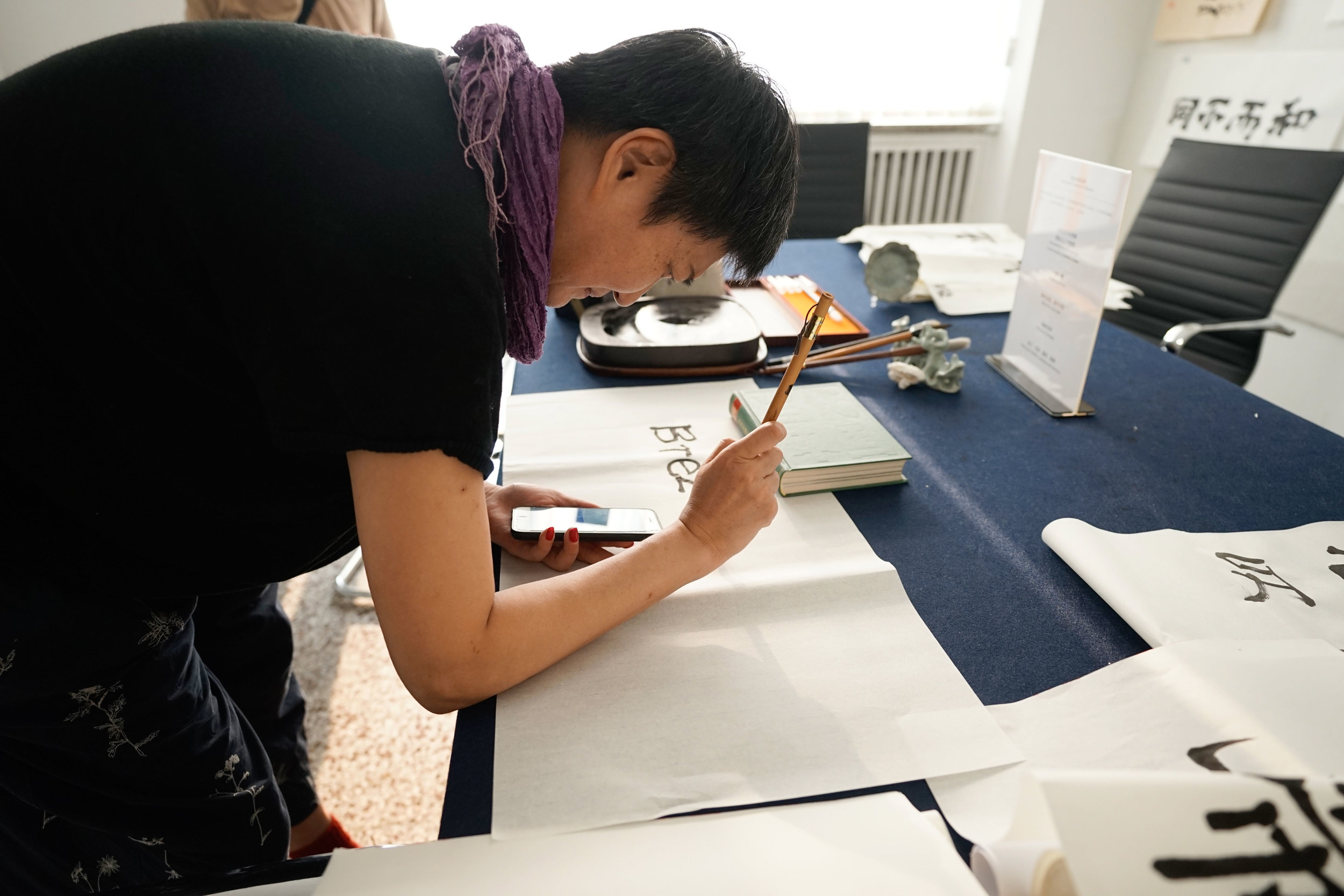
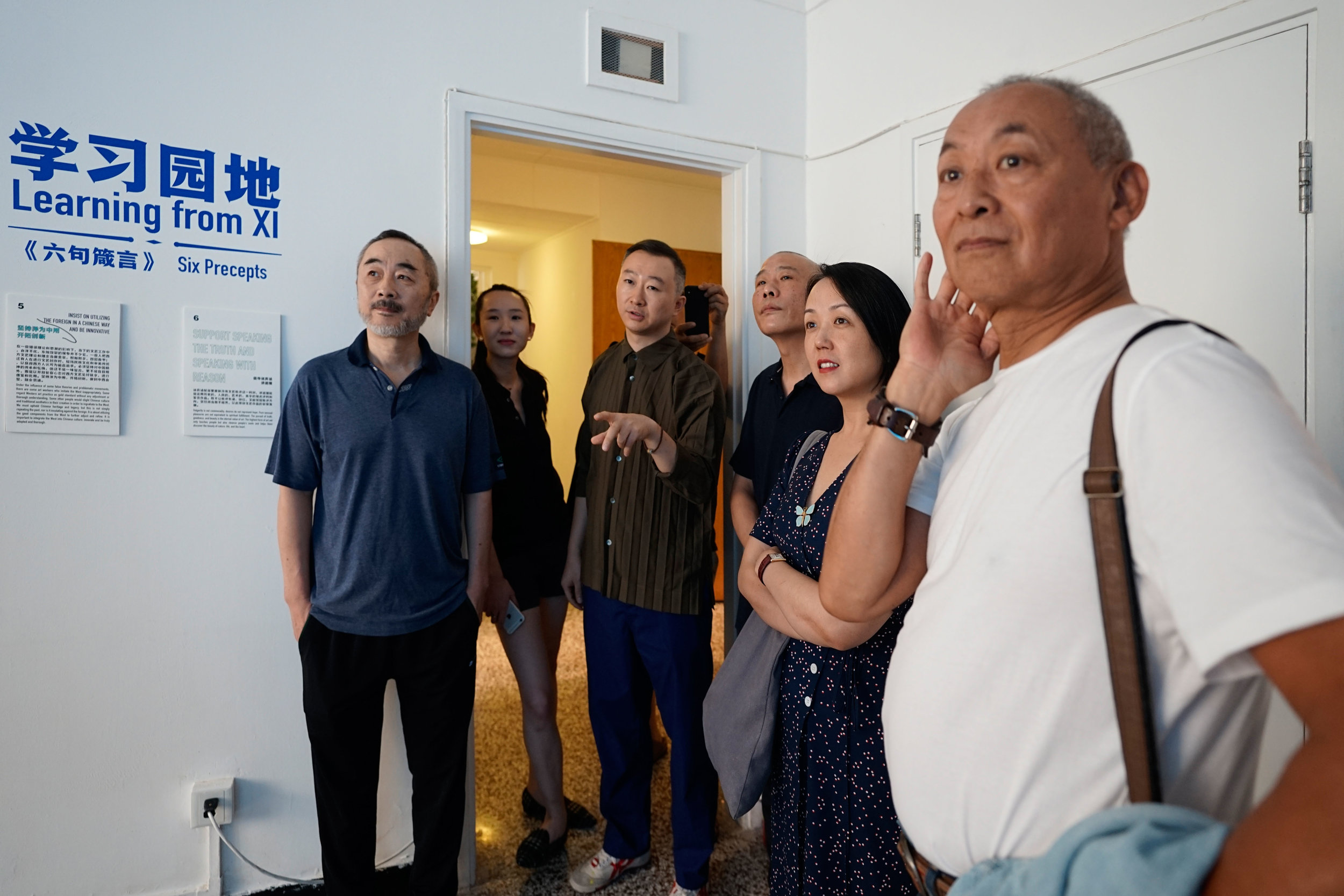

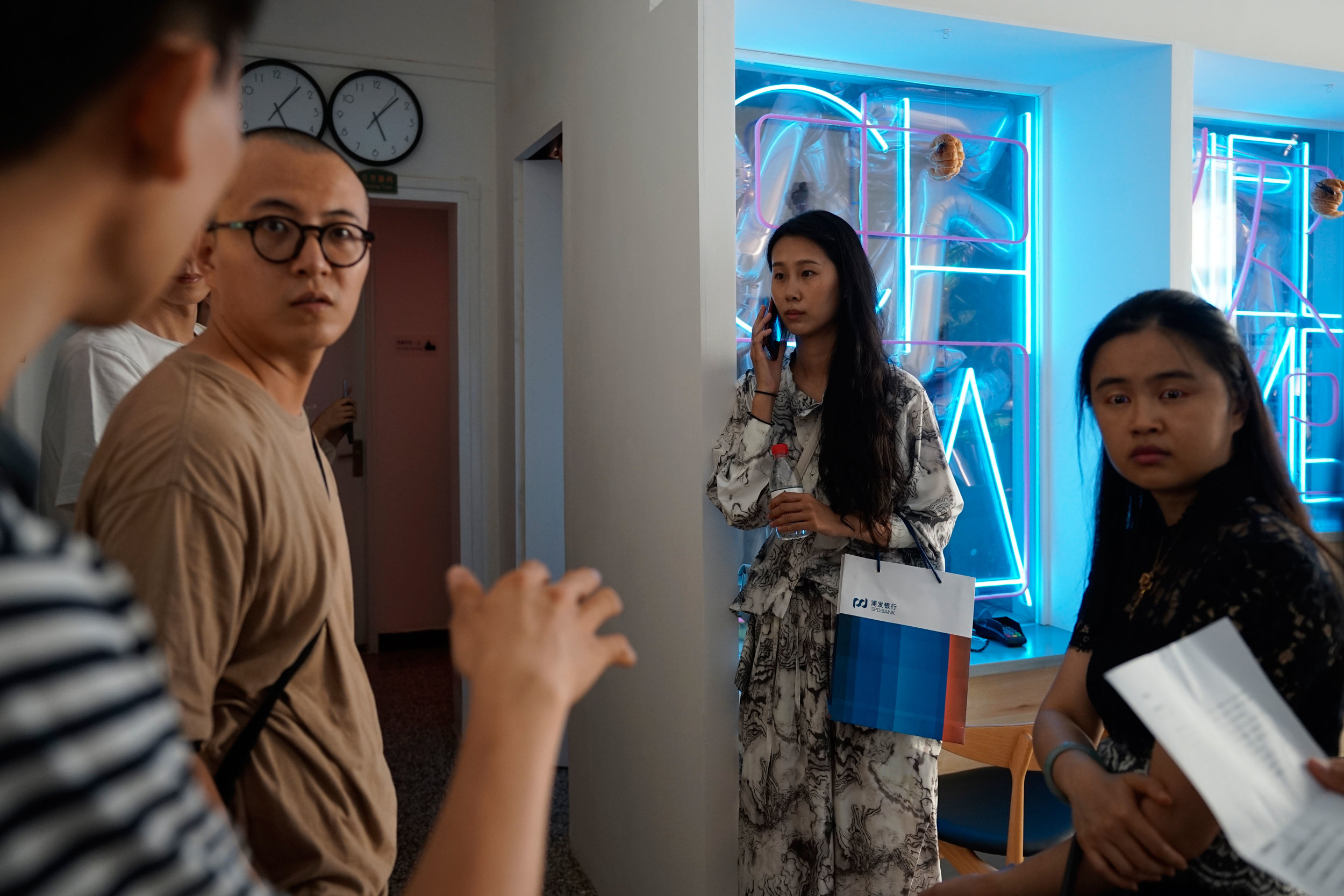
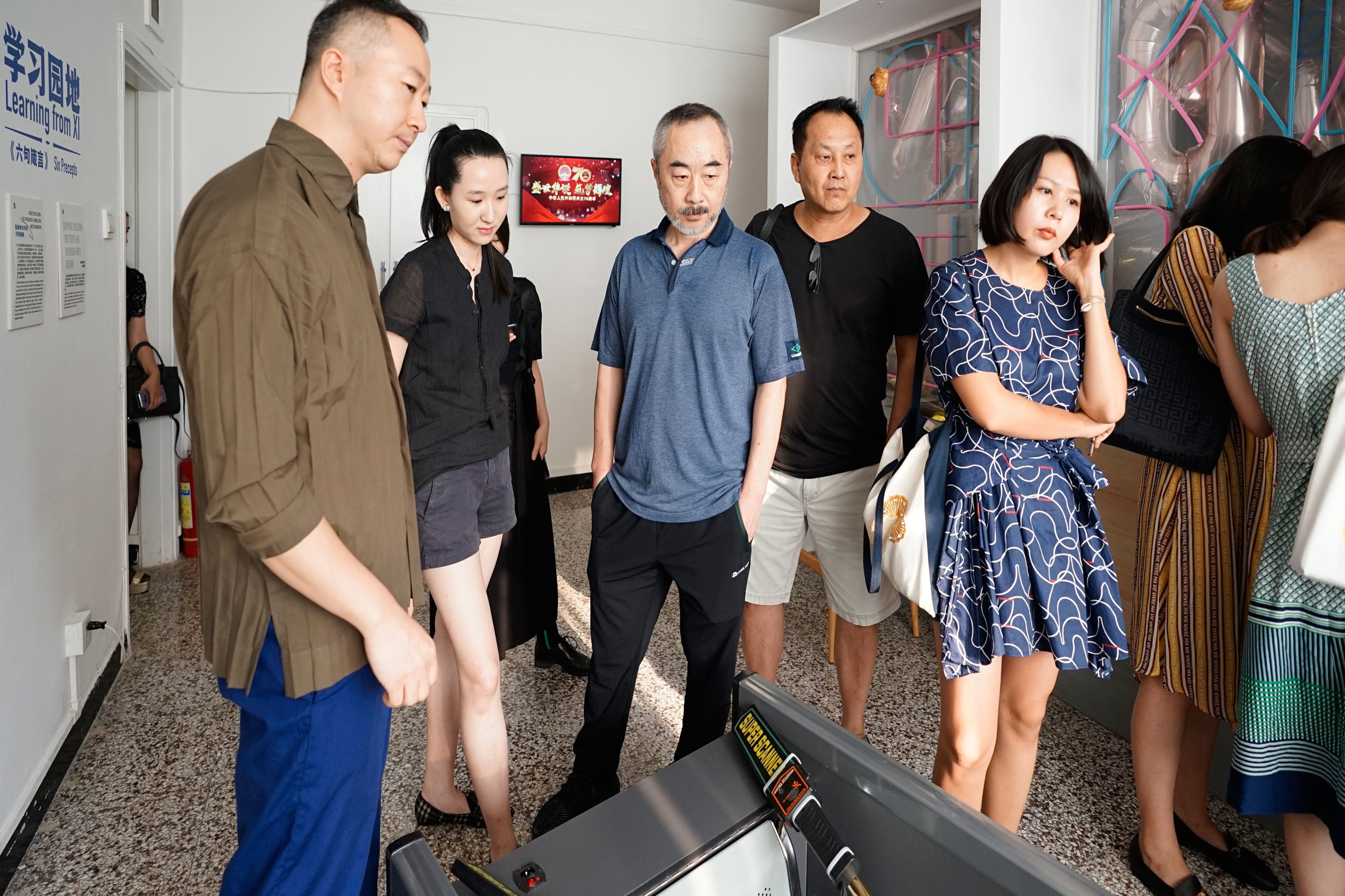

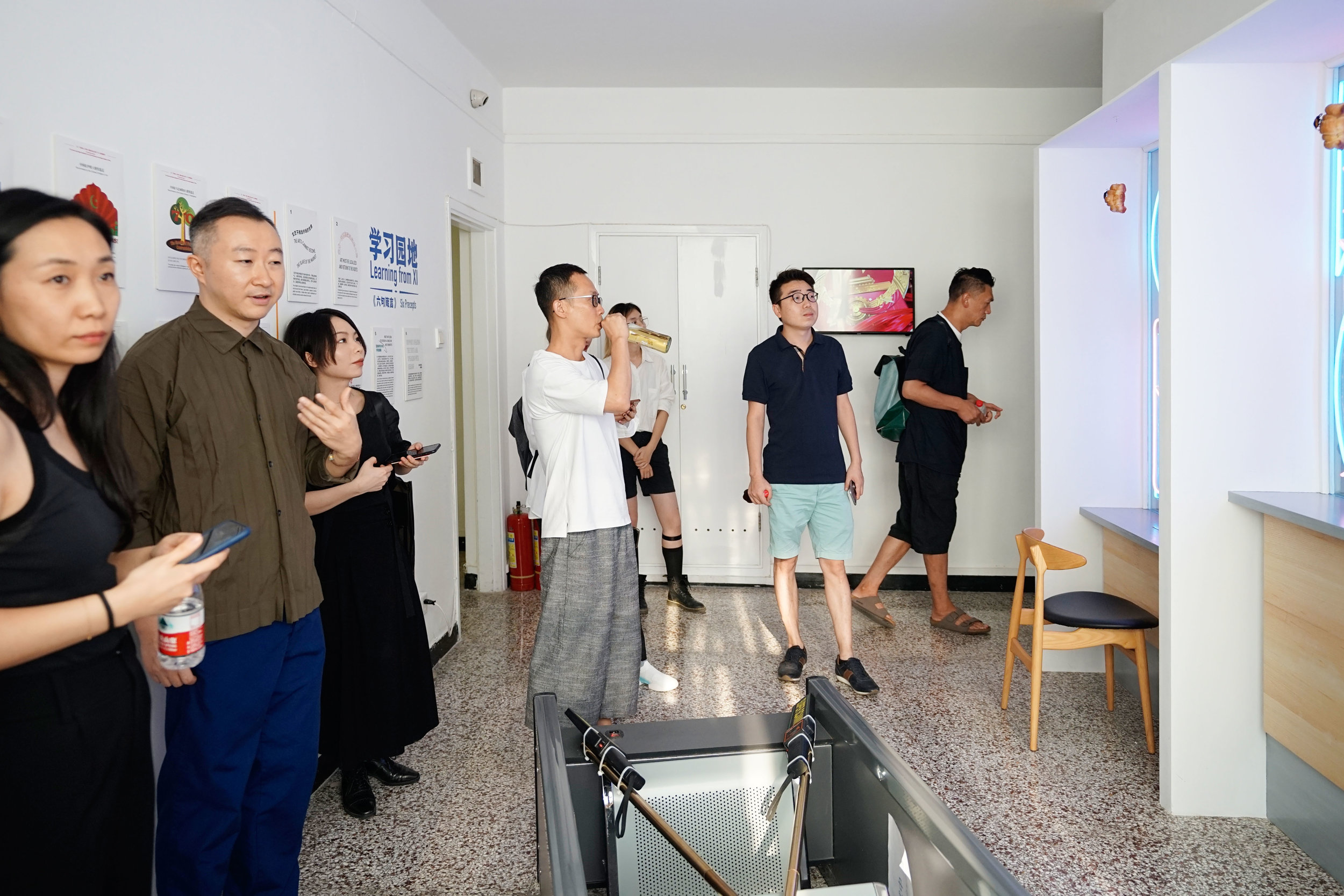
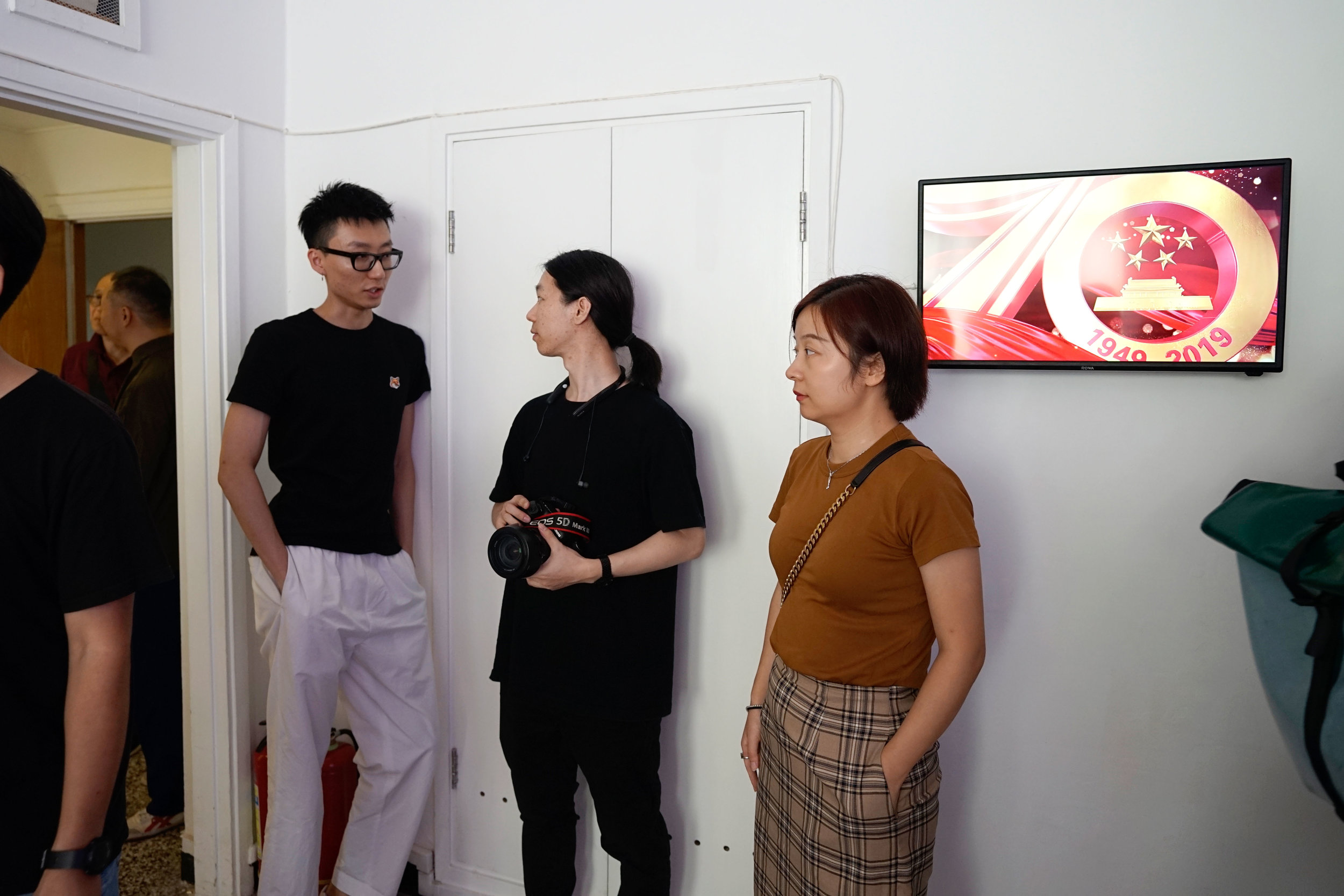

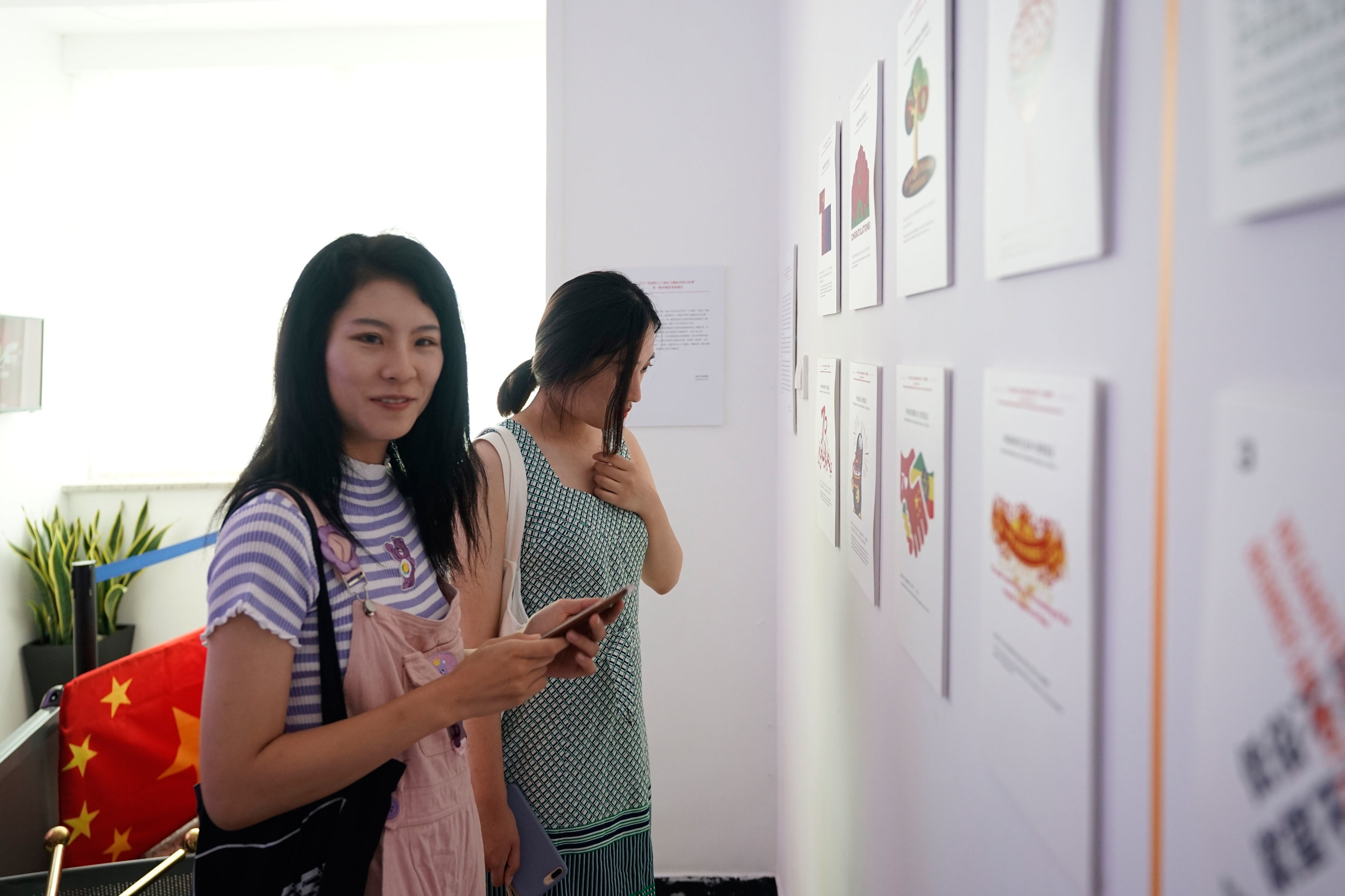

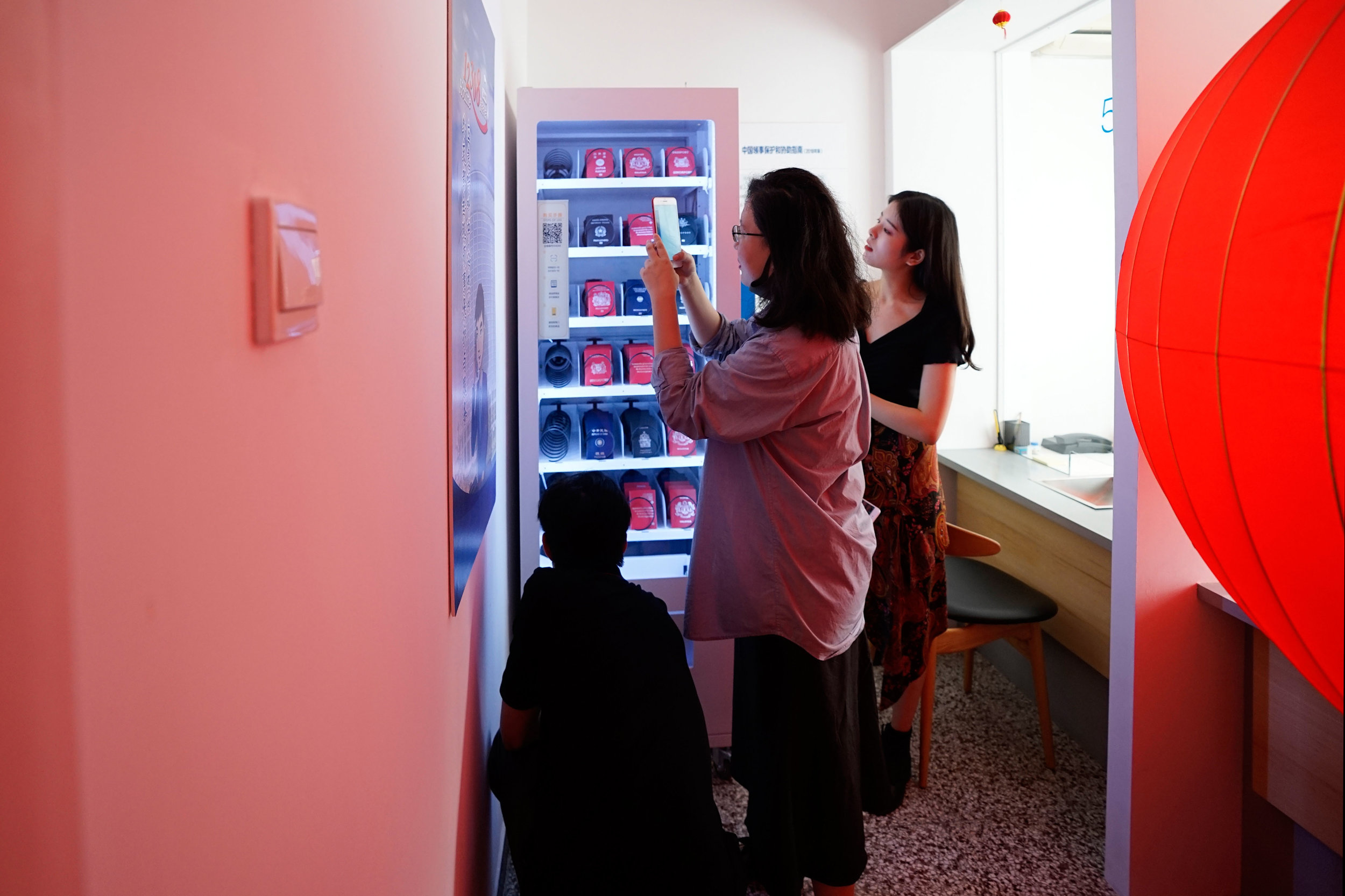
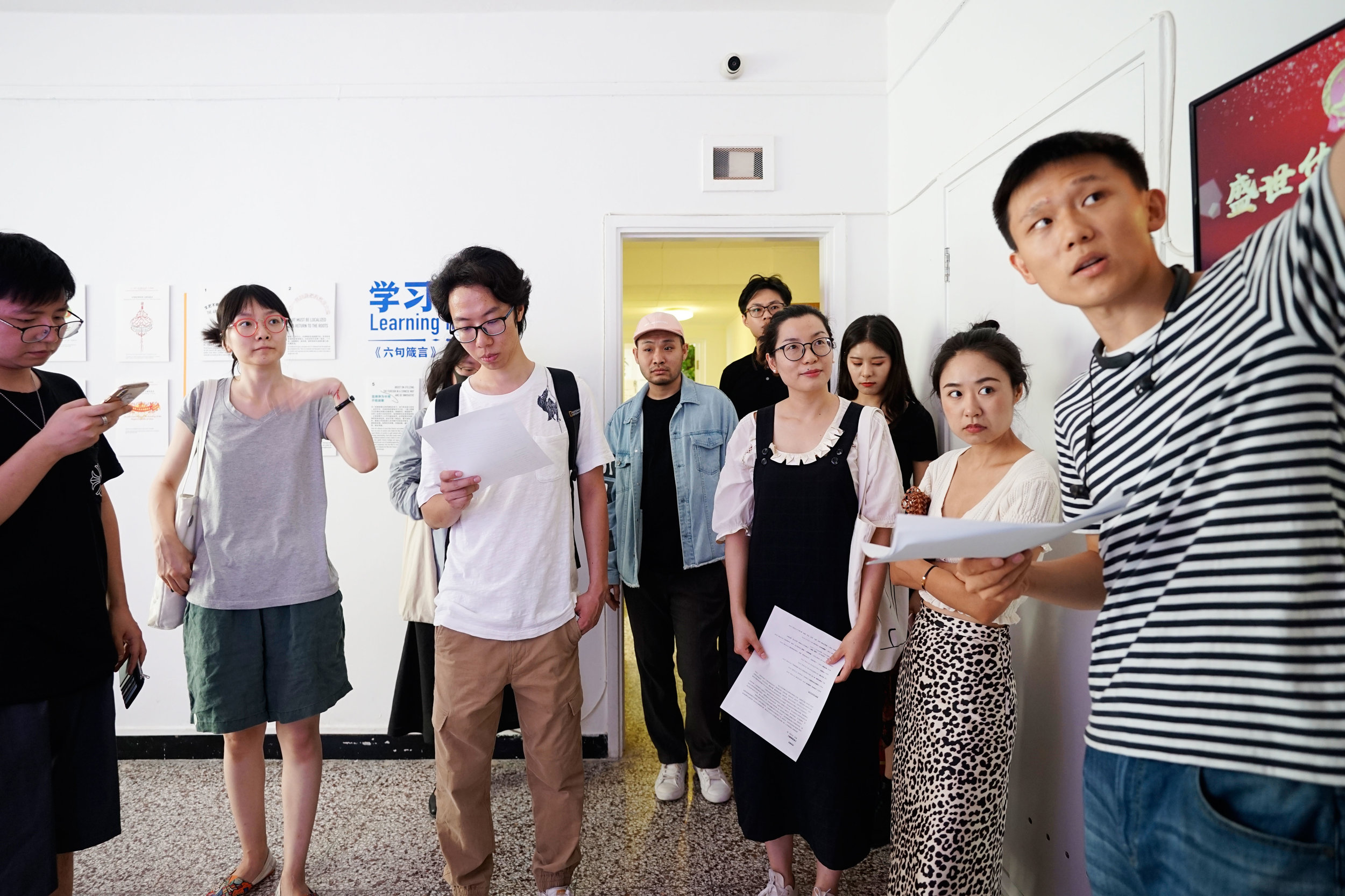
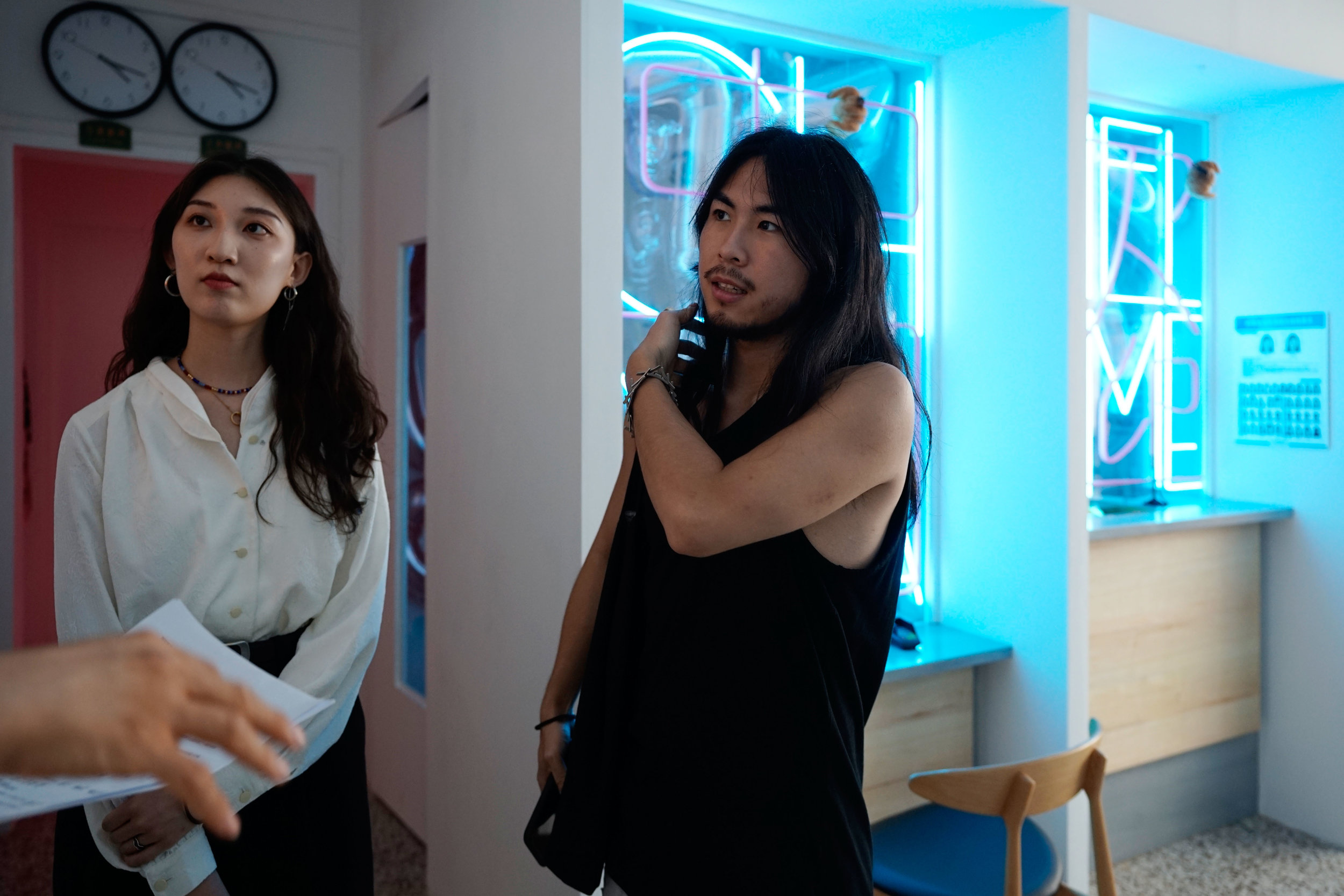
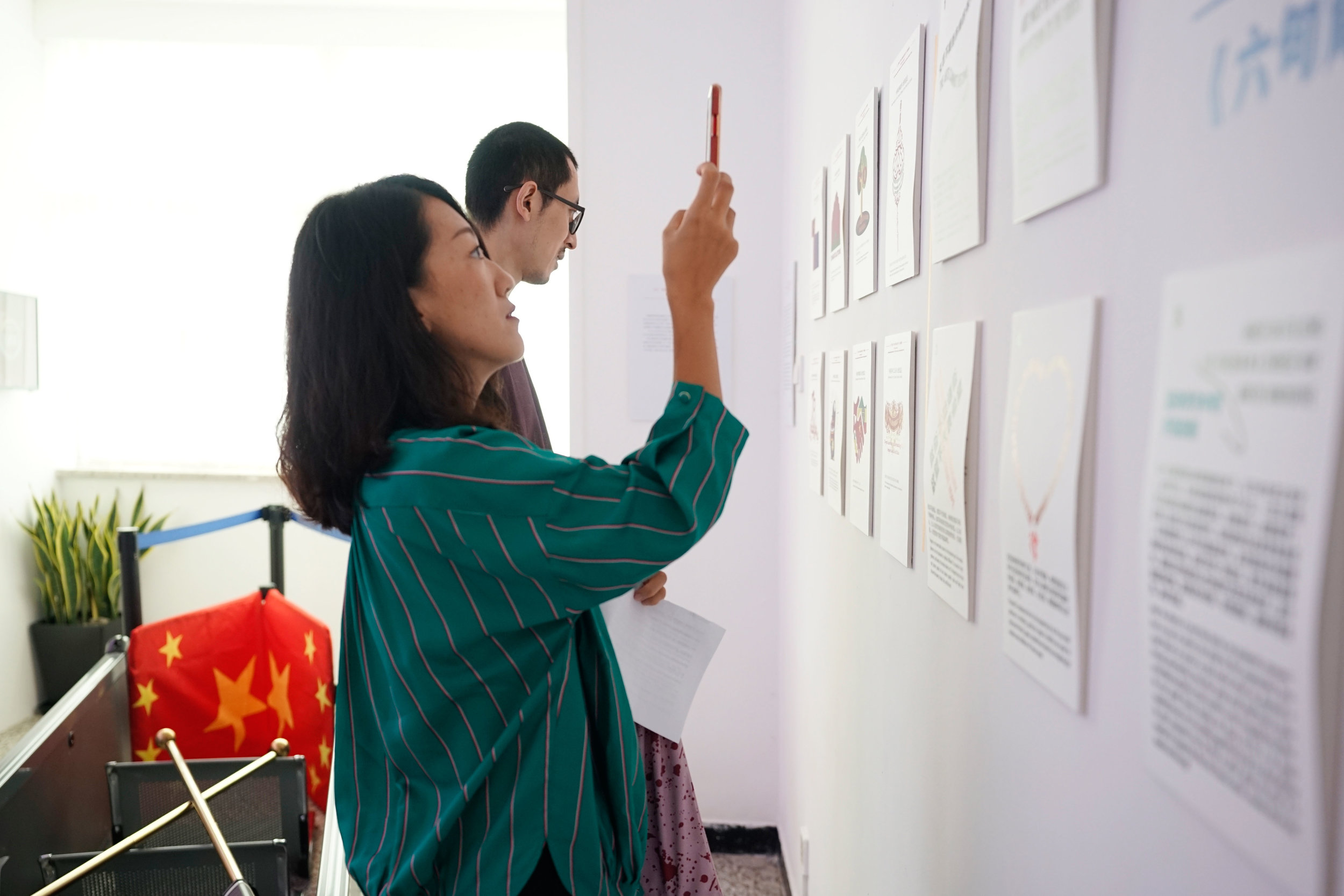



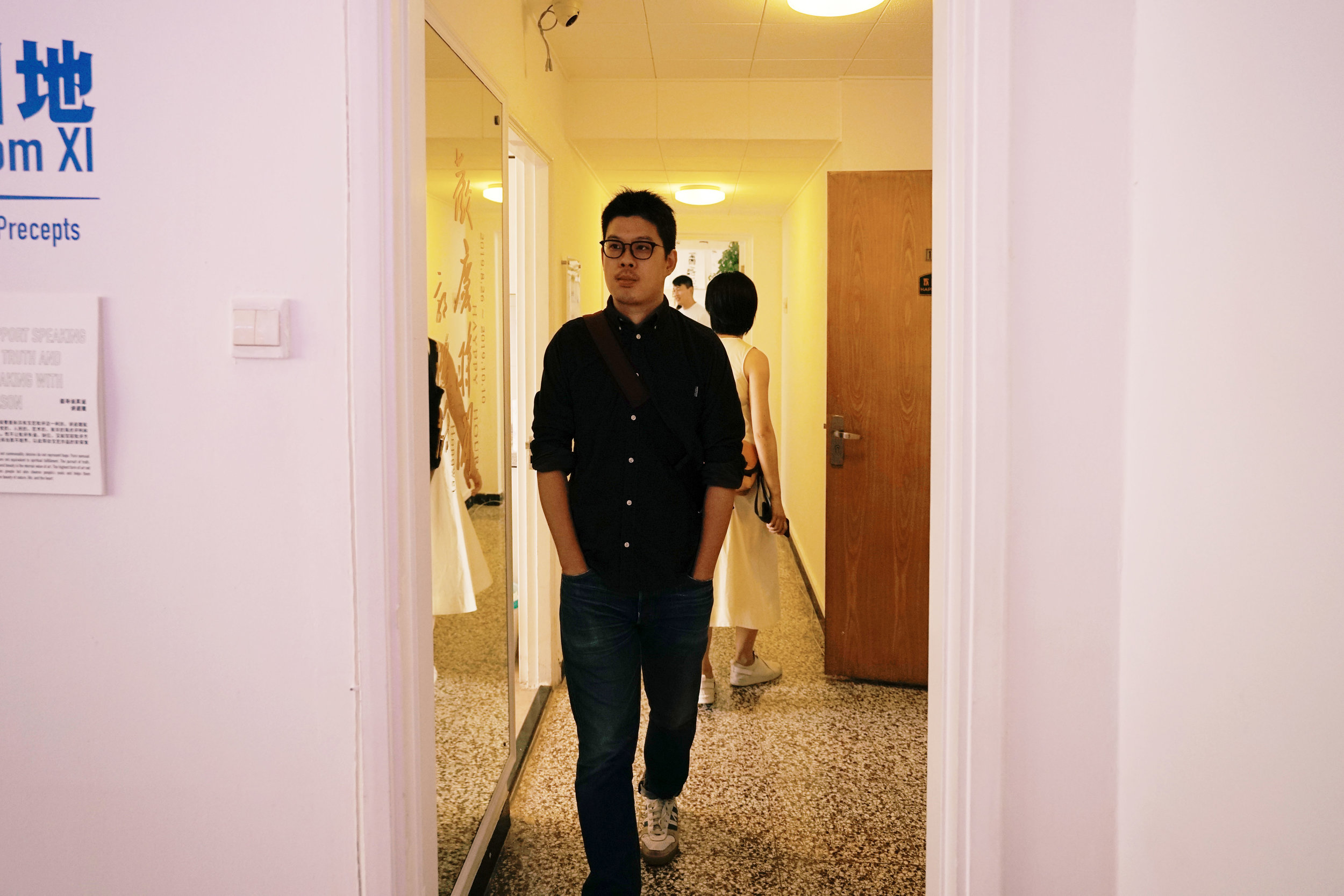
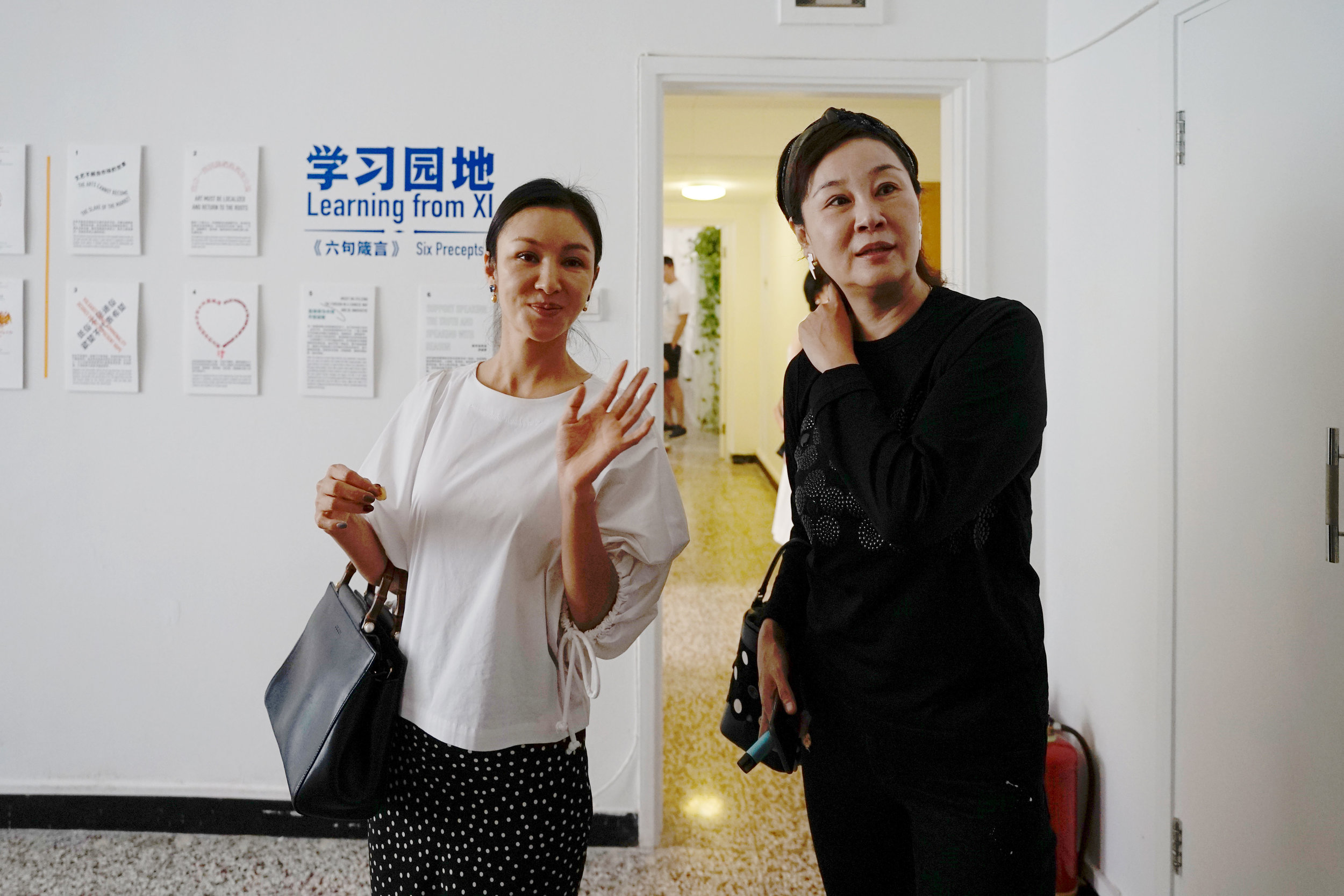
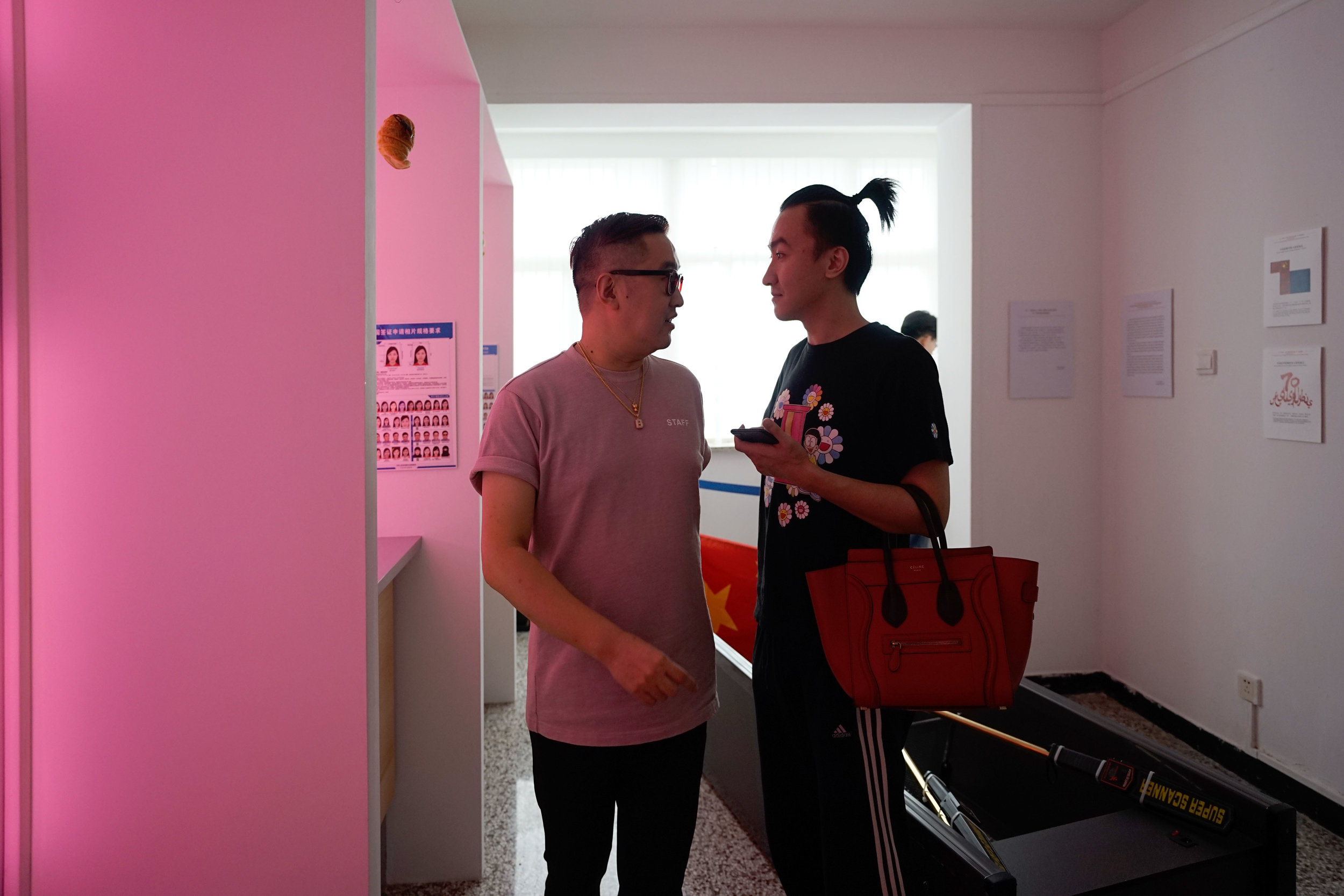
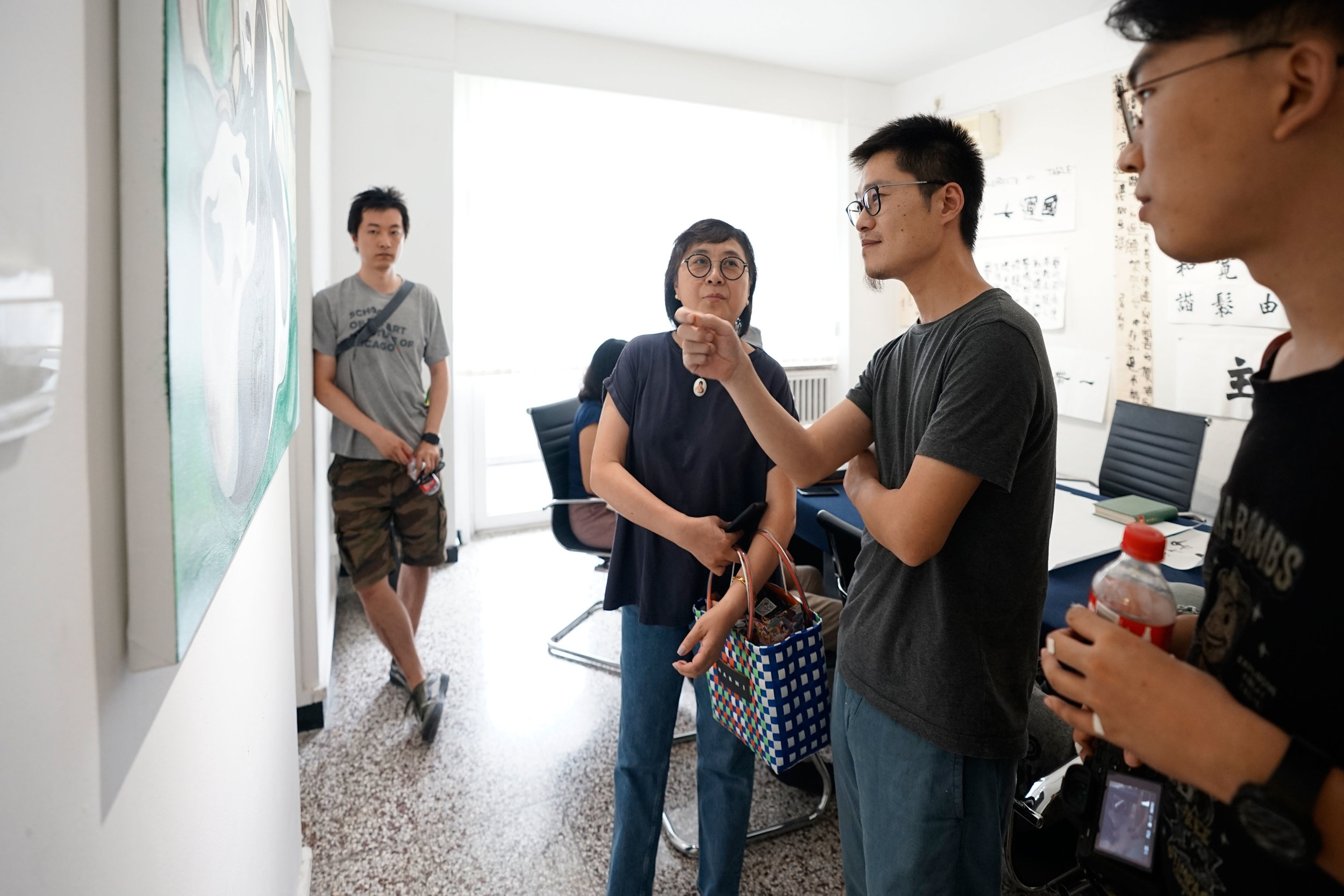
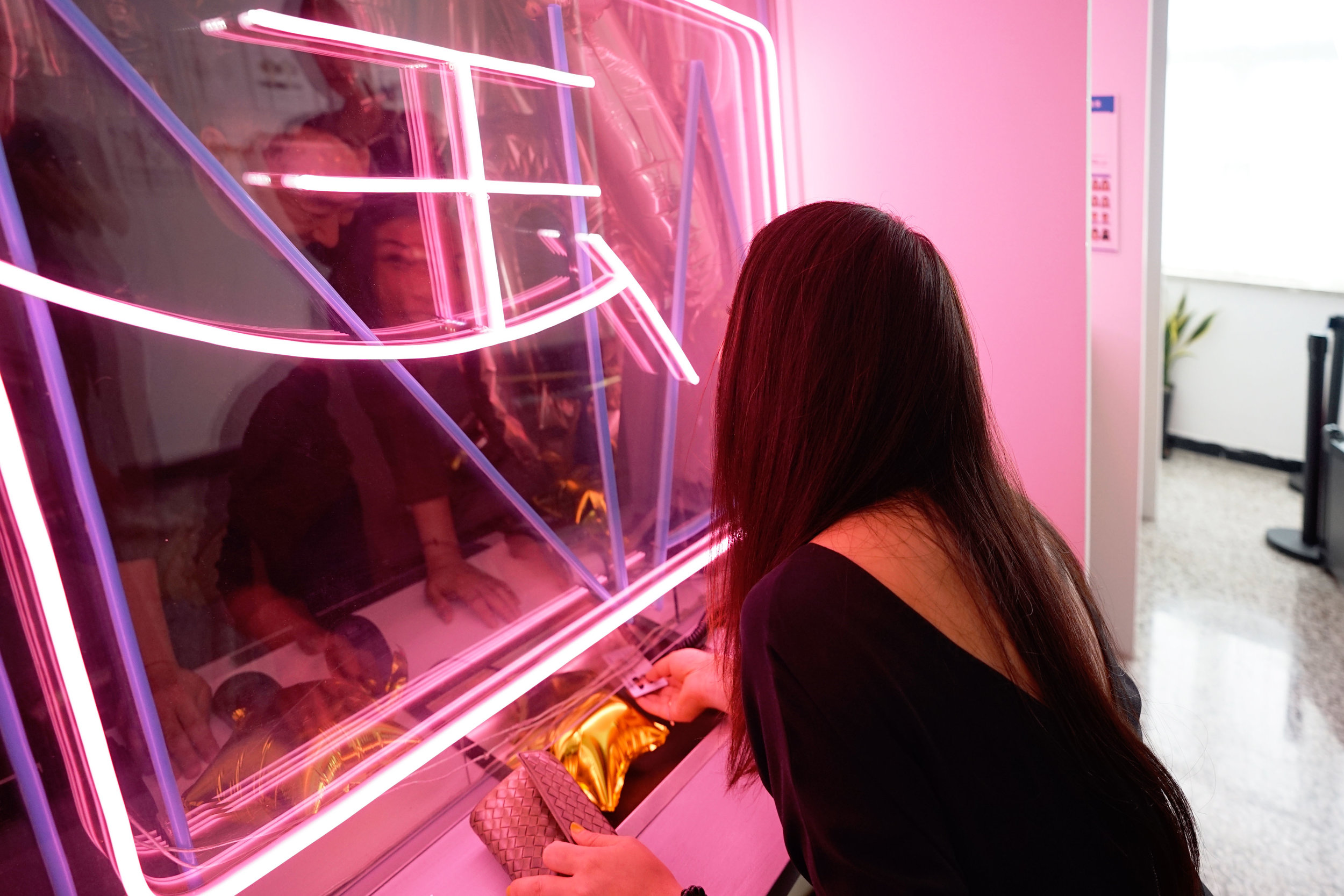
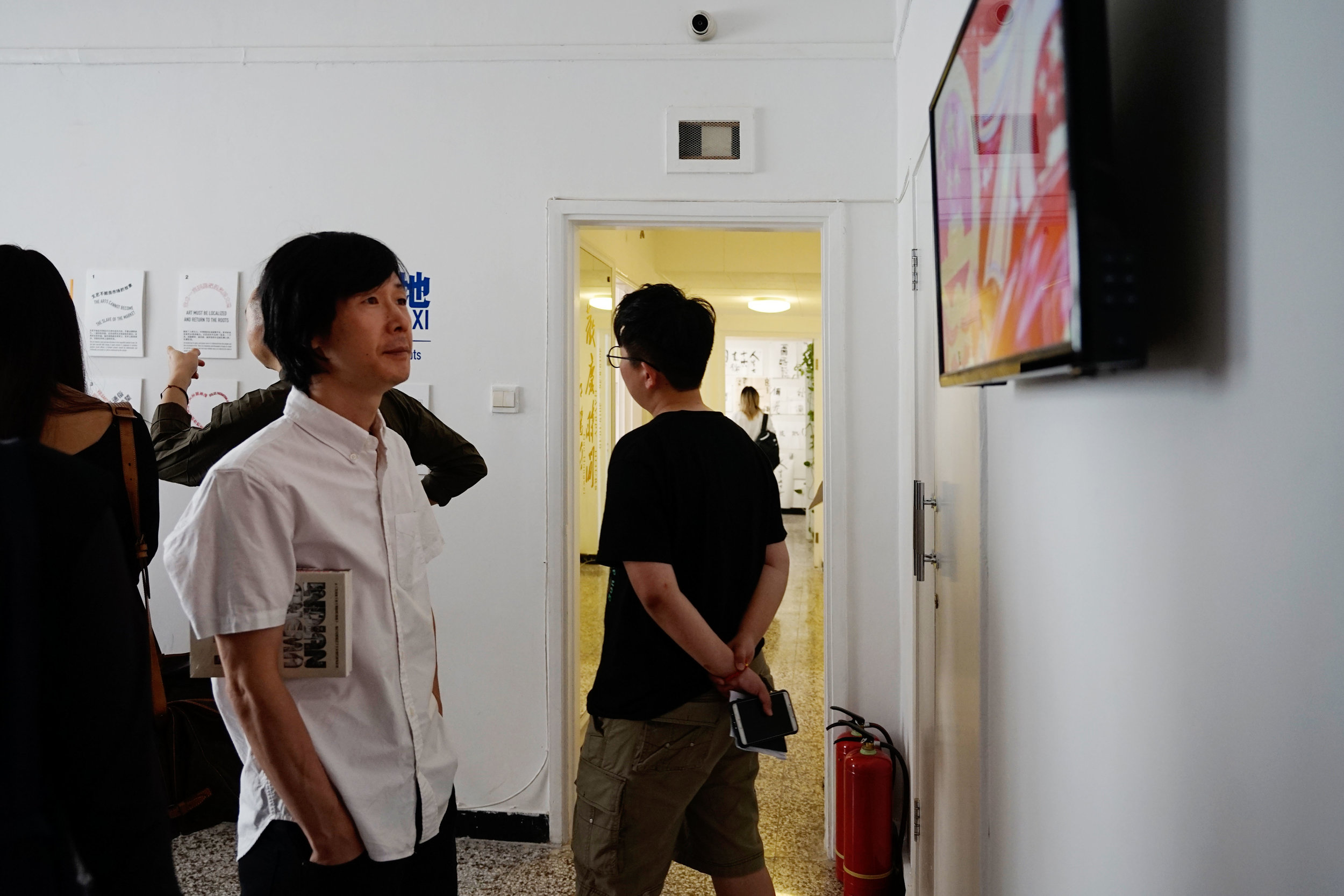
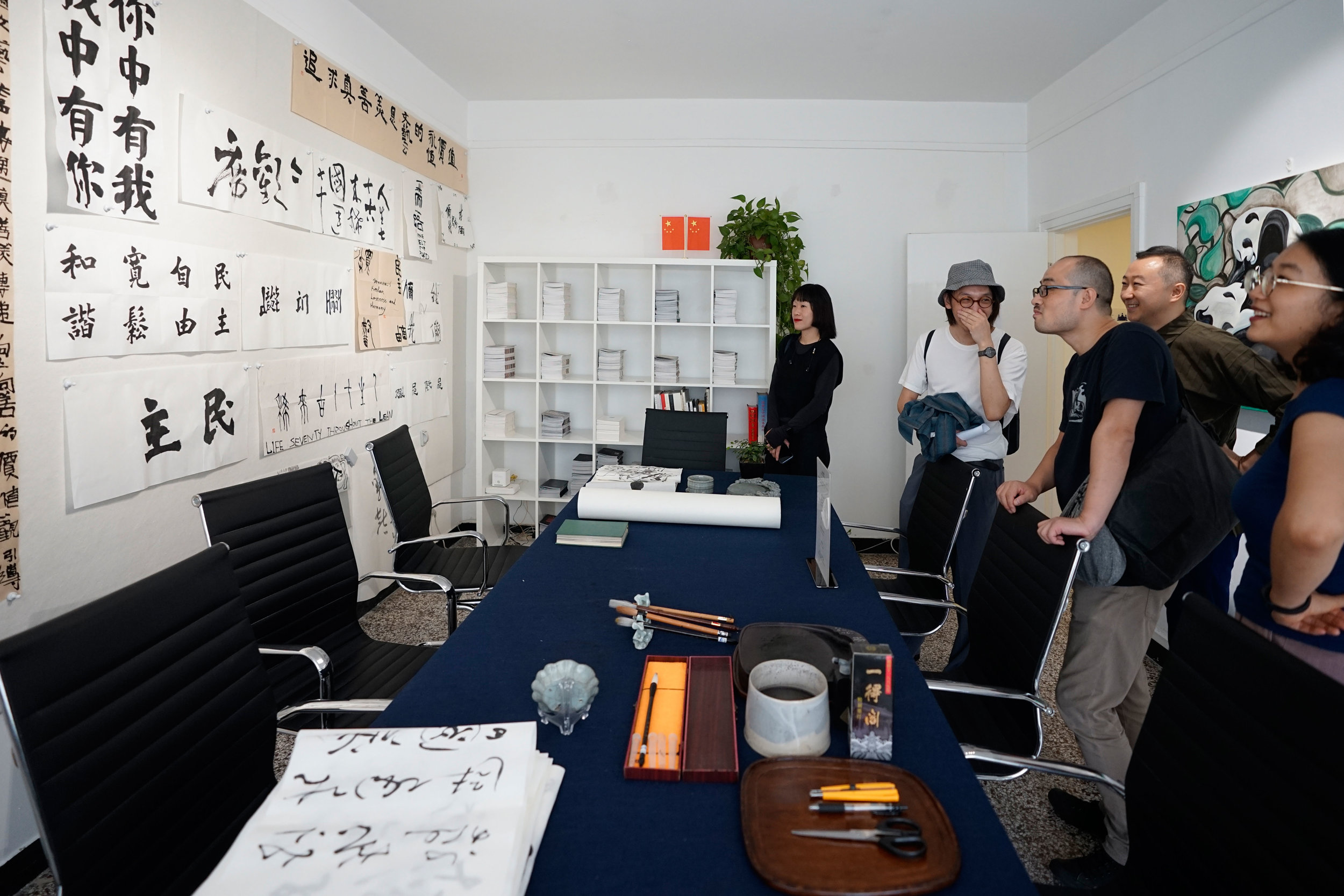
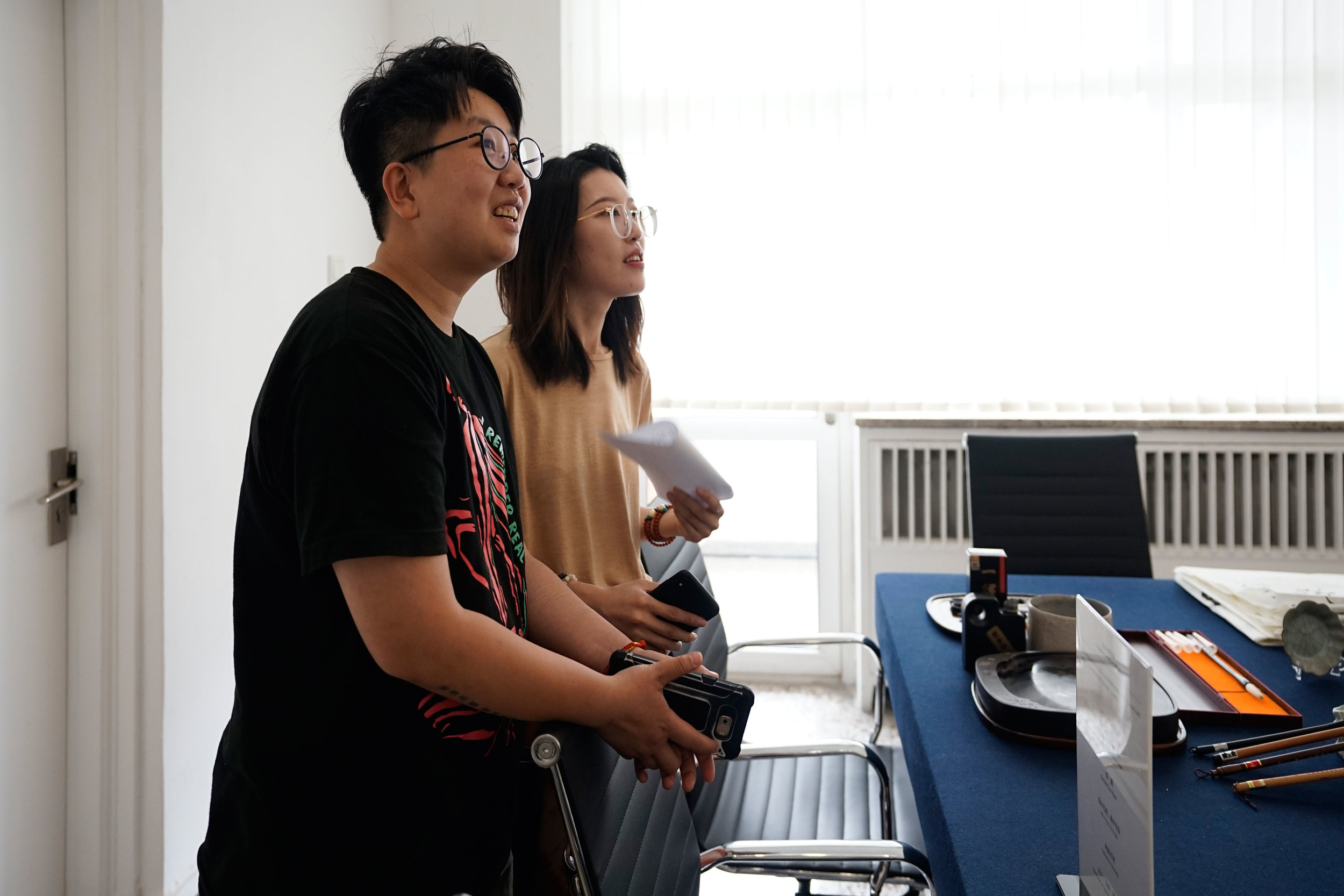
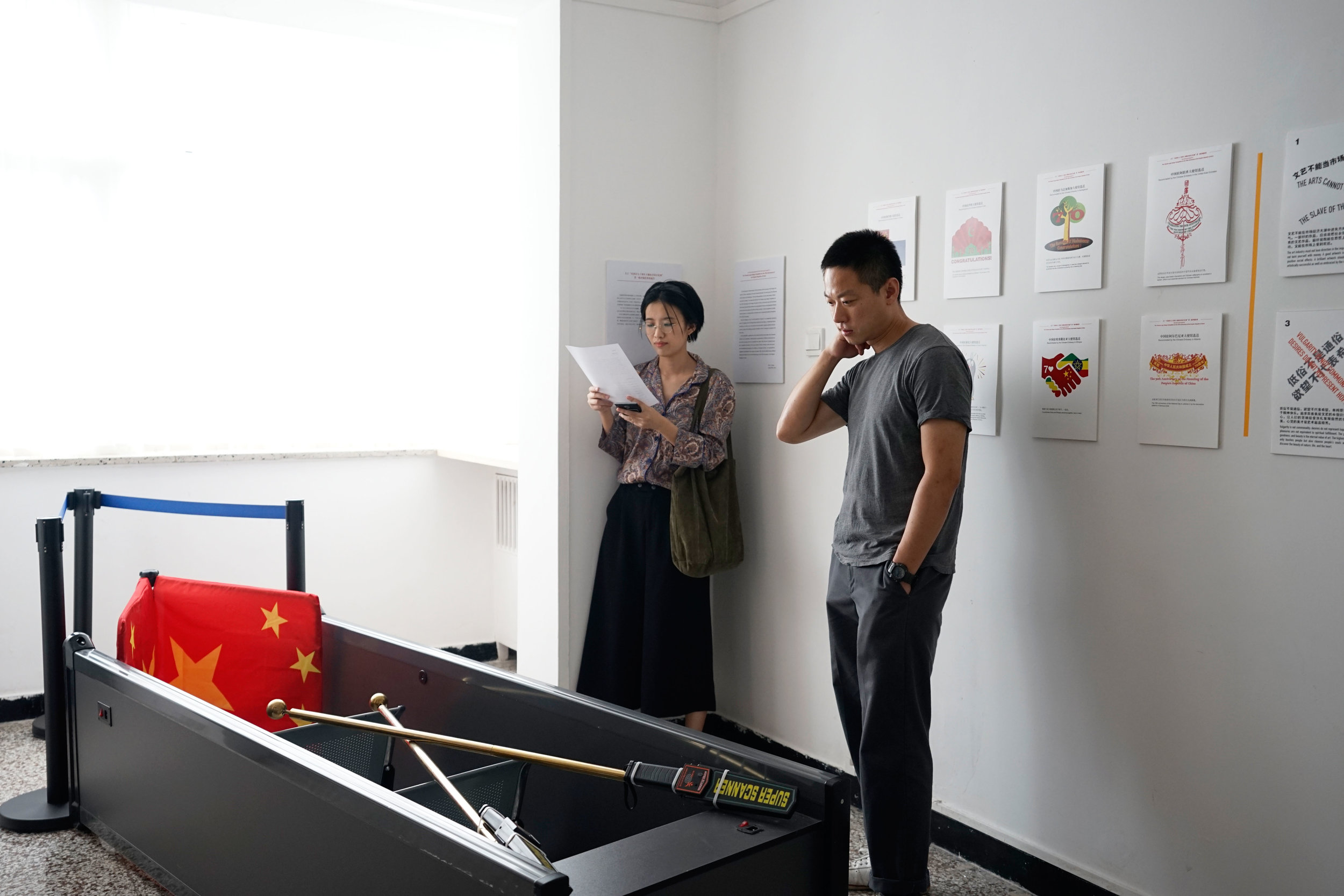
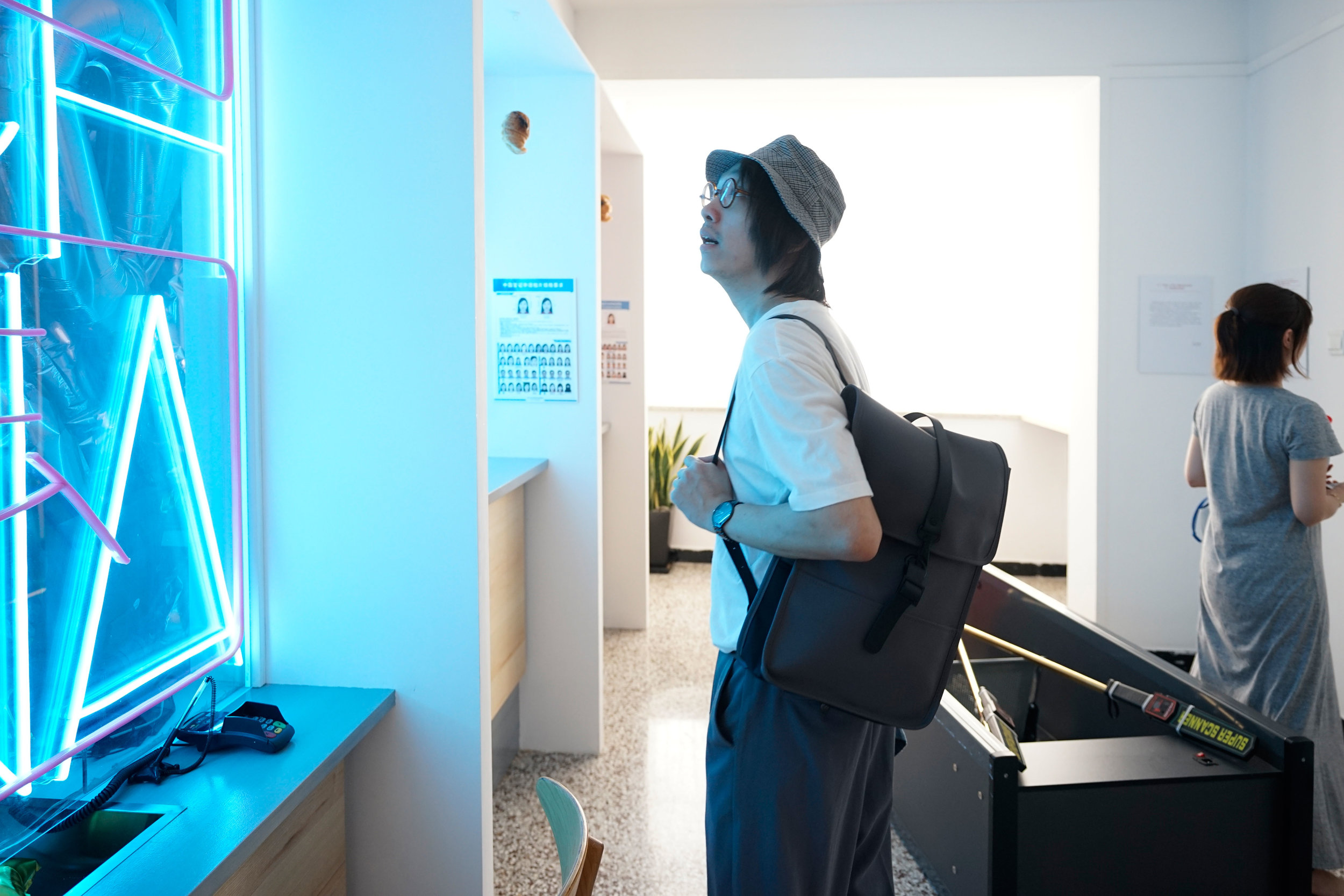
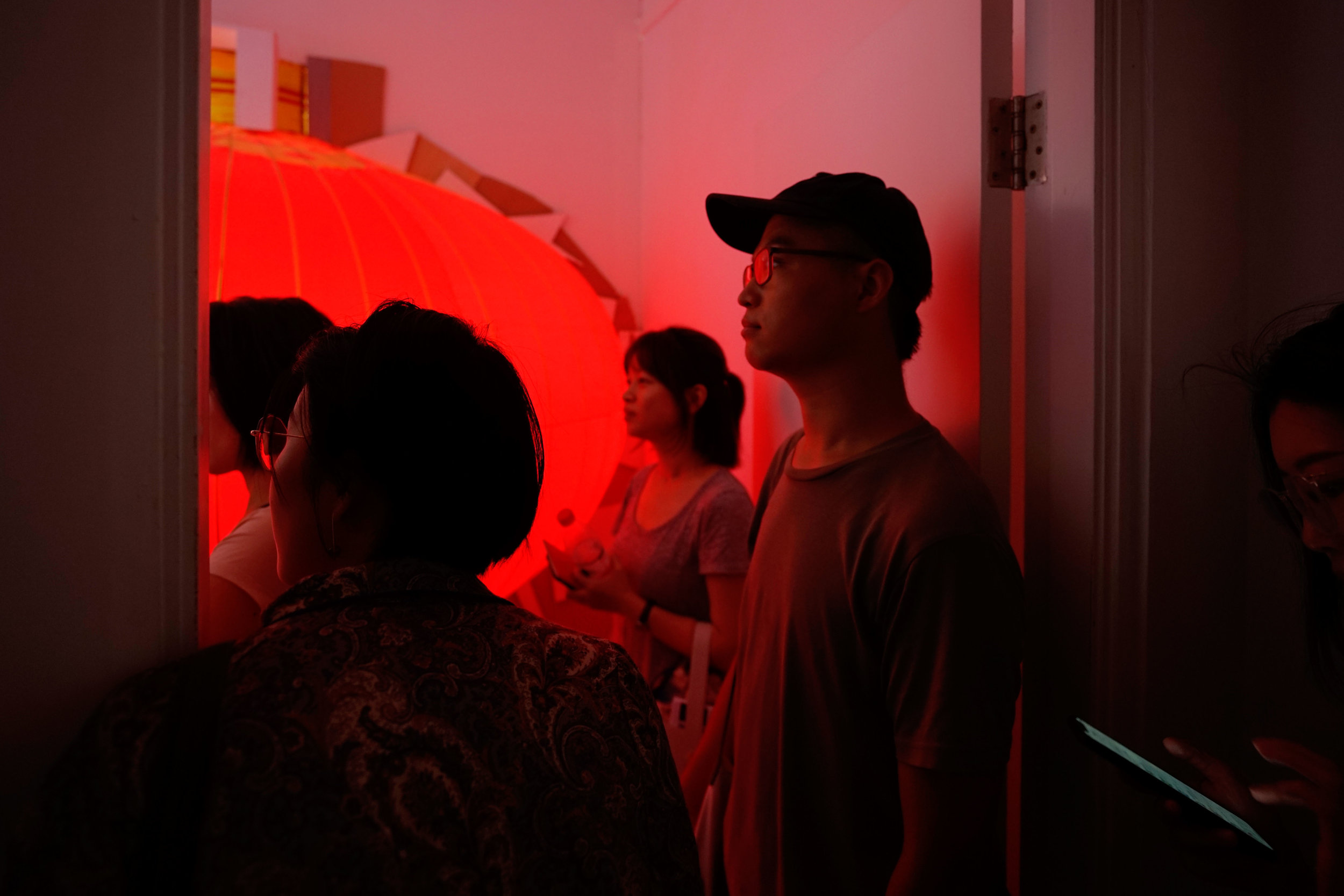
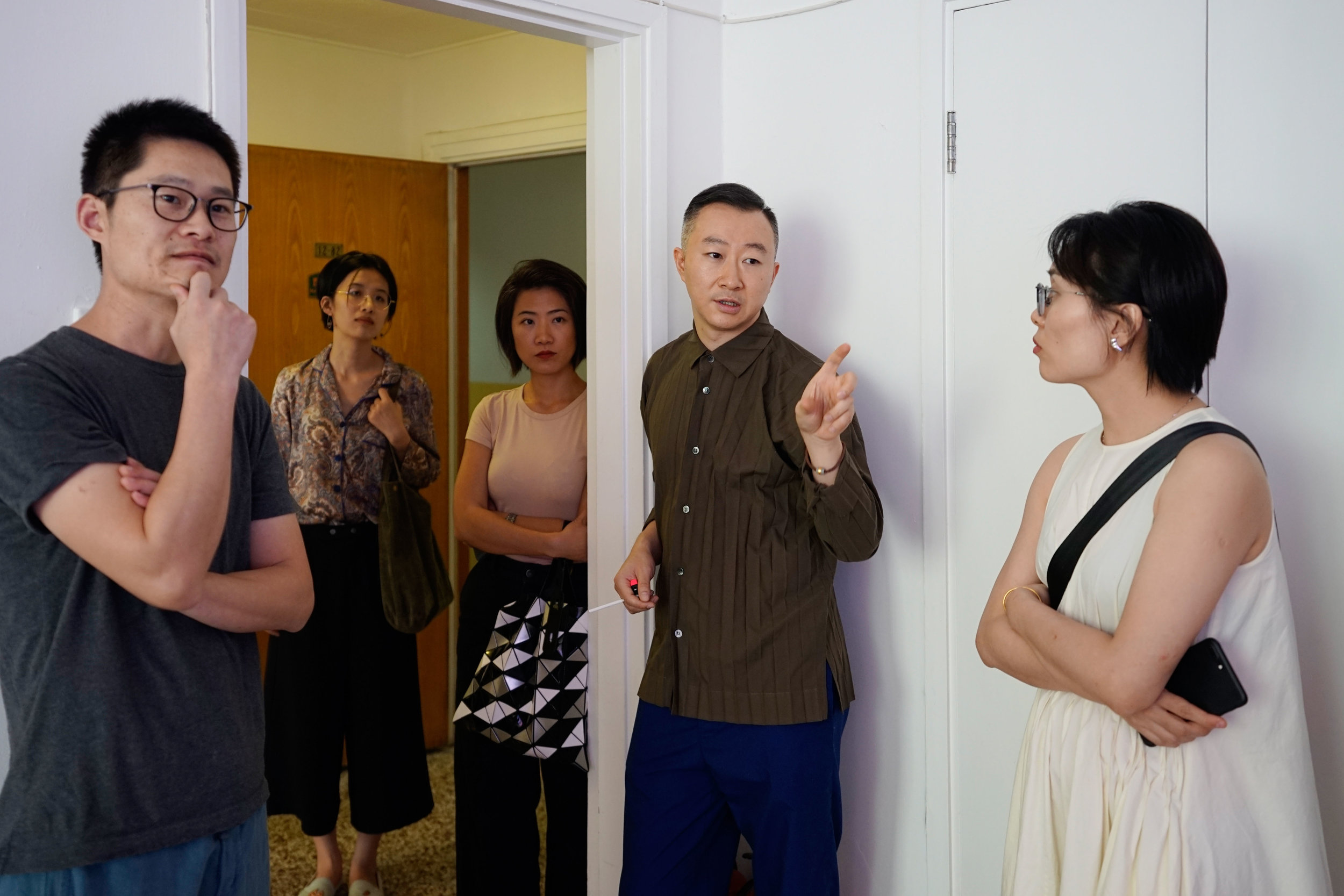
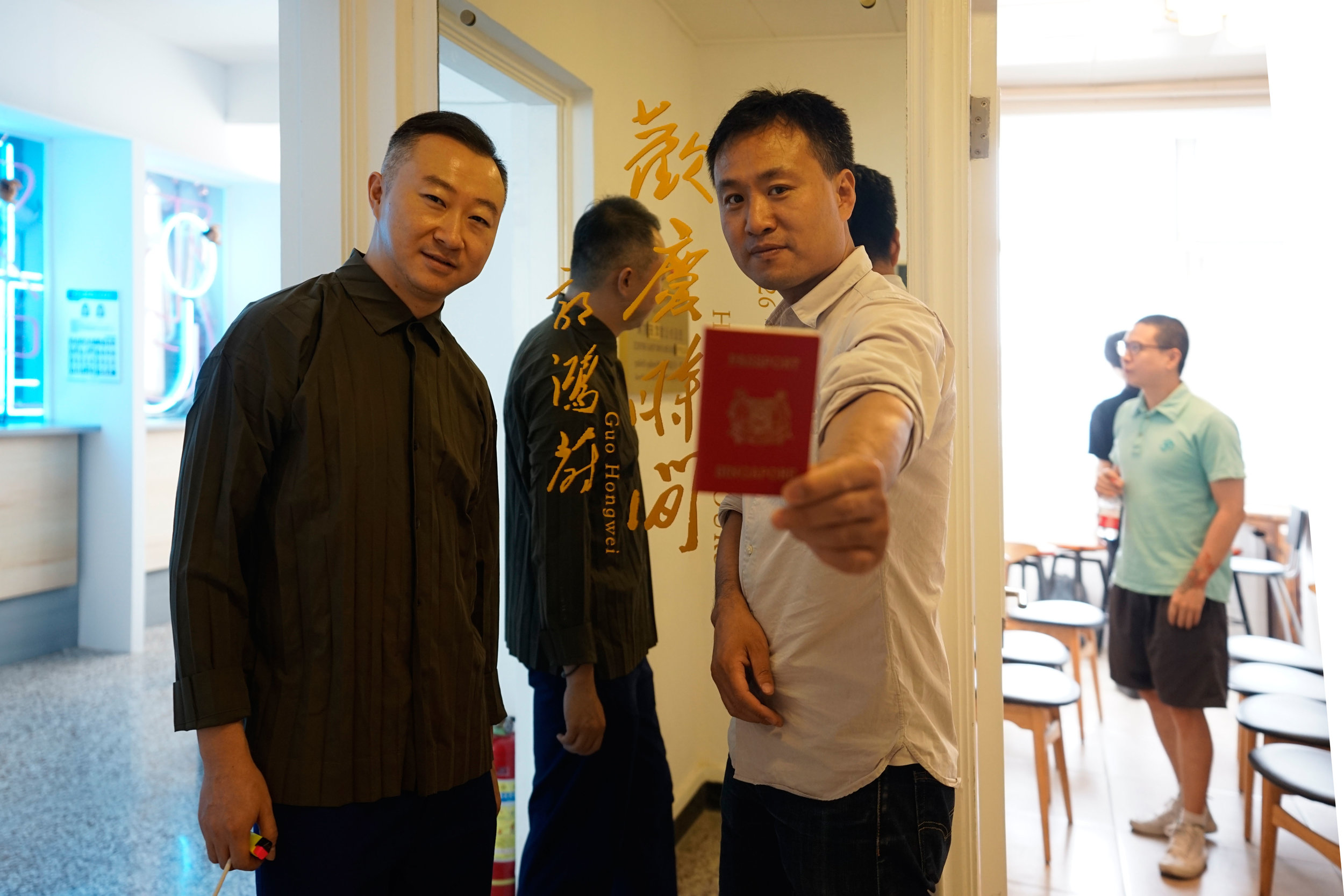
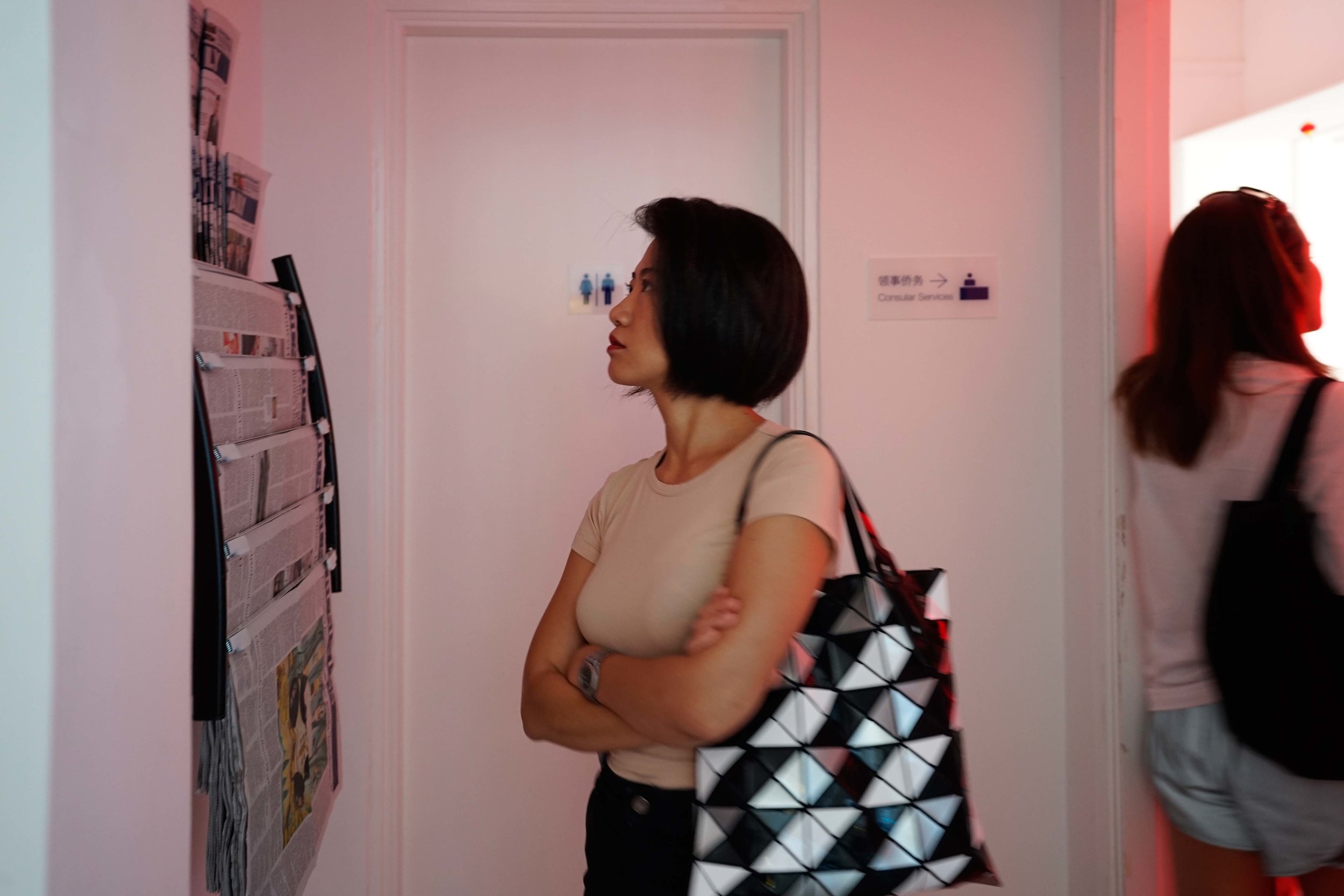
HAPPY HOURS——Guo Hongwei
《欢庆时间》——郭鸿蔚


















































































